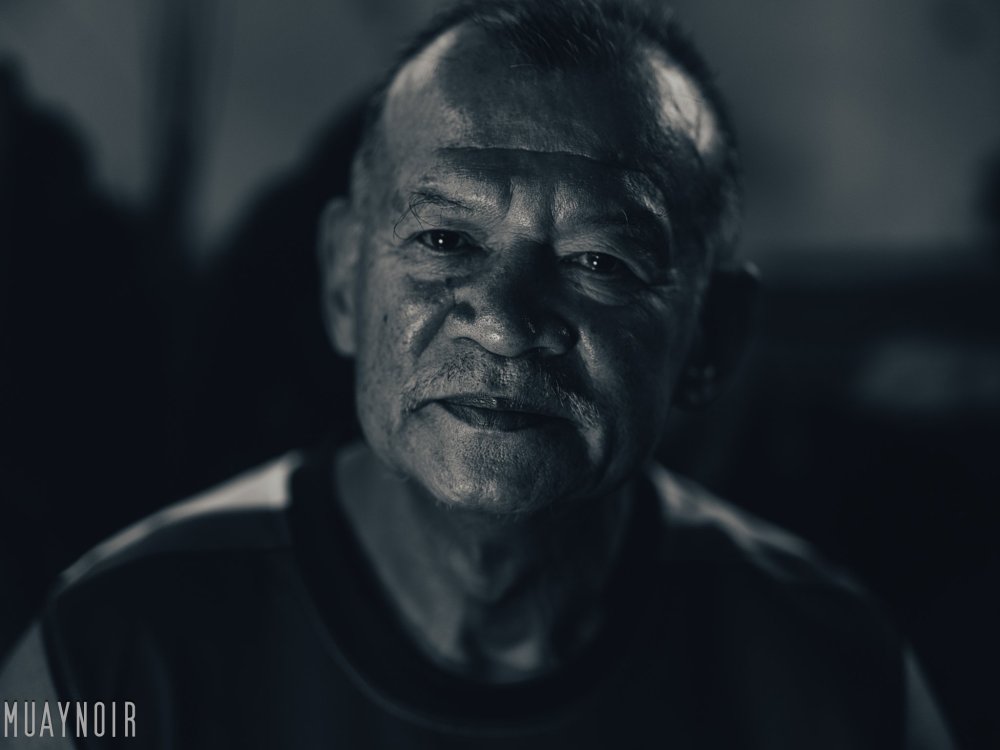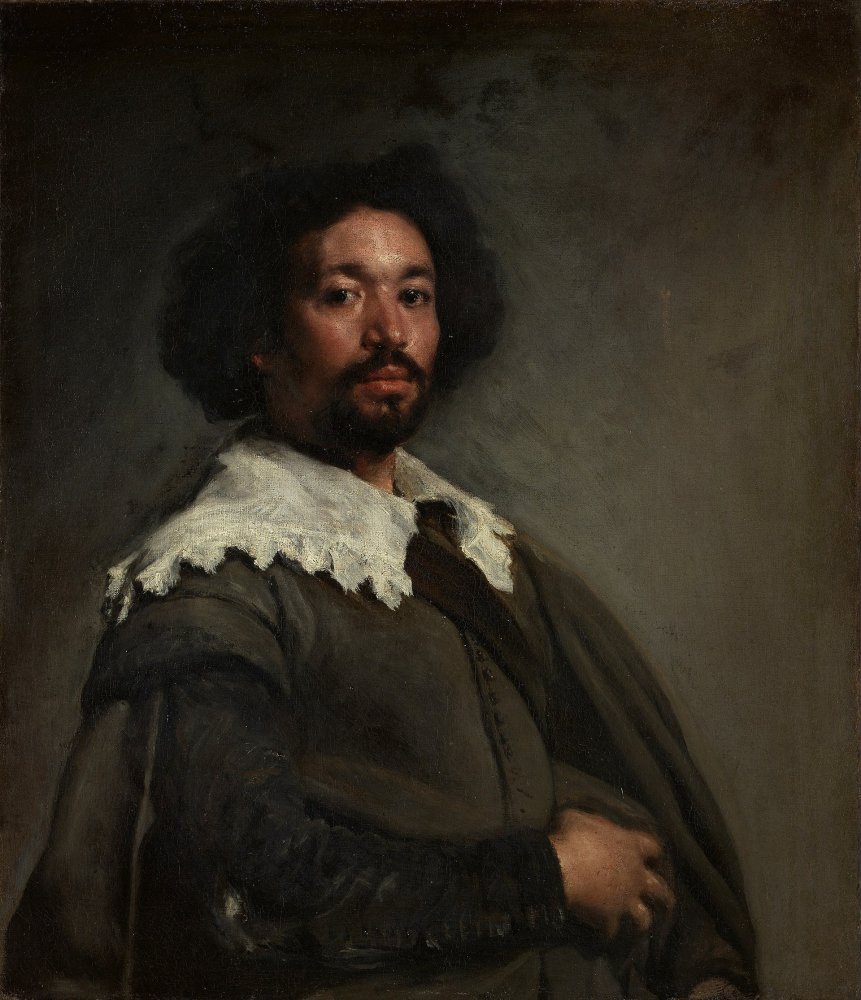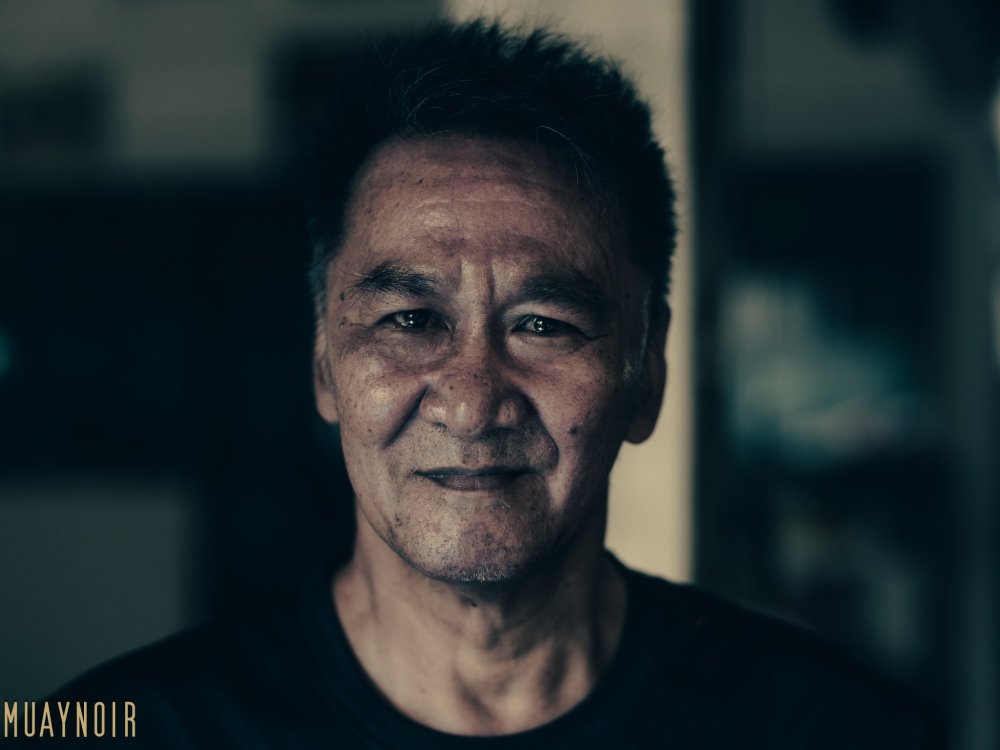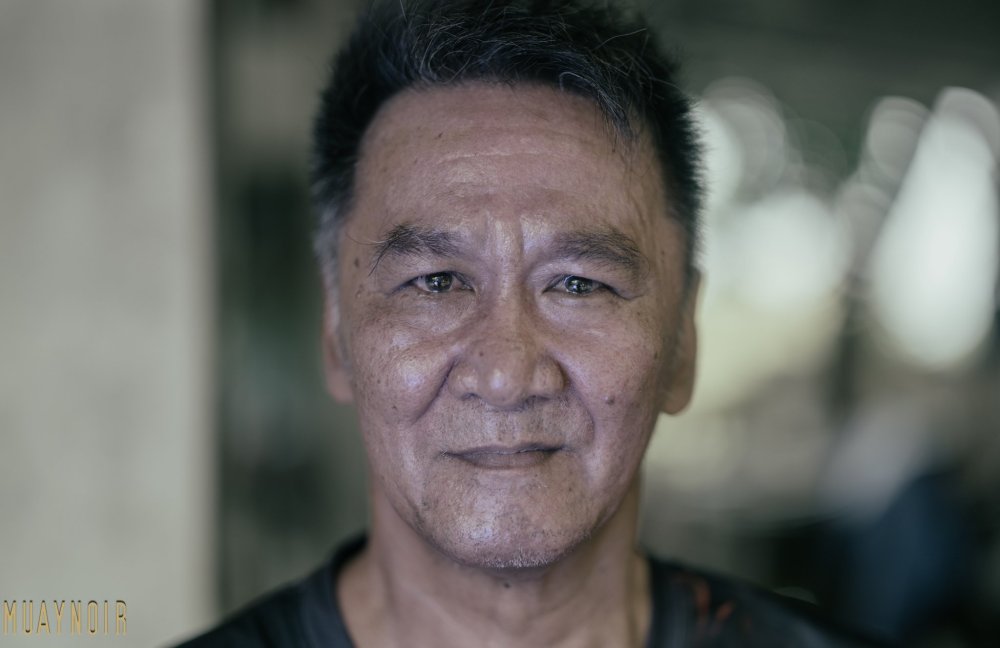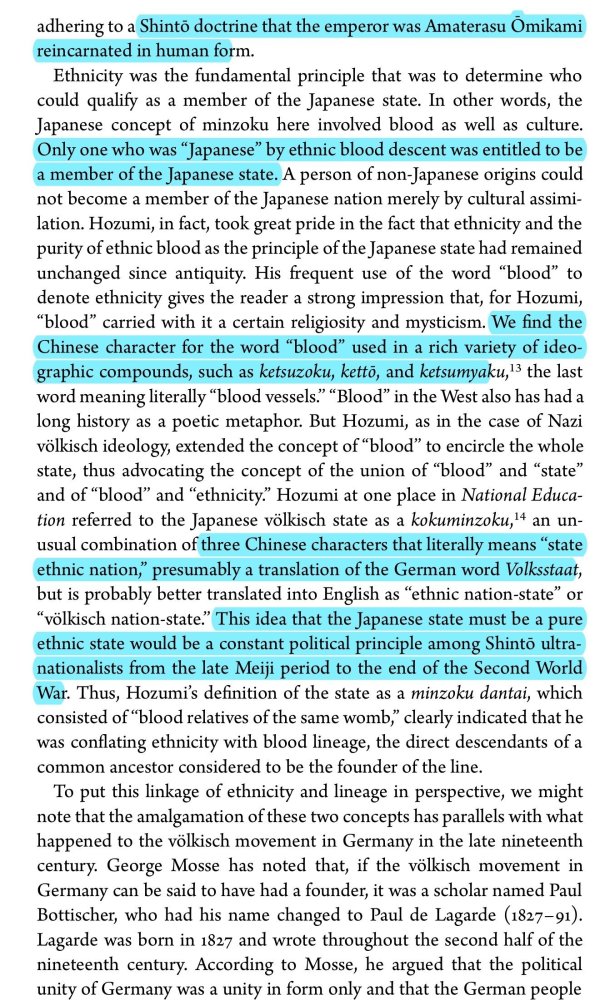-
Posts
2,264 -
Joined
-
Days Won
499
Everything posted by Kevin von Duuglas-Ittu
-
Taking Privates in Thailand Listen. Taking privates in Thailand is NOT Authentic in the usual sense, but...if you've read my article post above (and clicked through to the rest) you will absolutely understand when I say: Take privates in Thailand. And take them especially from great ex-fighters and krus. Because the traditional path to elite, Golden Age Muay Thai no longer really exists in Thailand, or at the very least is highly fragmented, learning directly from the men who lived and were shaped by that process in concentrated one-on-one sessions is probably the best single thing you can do. These skills, that knowledge, was not developed in that way (one on one instruction), but these men hold knowledge that nobody on earth holds, come out of their own experiences and their continuous living in the sport especially at the highest Age of its development. There is no replacement, and its time is limited. So, while you will not be learning in the kaimuay churn in these sessions, and instead will be directly interacting with a great fighter or kru, what is being taught is in some ways the most authentic. And, if you aren't in Thailand, the Muay Thai Library is probably your only way of coming in consistent contact with it (aside from having such a great Thai kru yourself).
-
in the above, there is a brief discussion of how Thailand's Muay Thai is being shaped by class, as it gravitates toward the International model of fighting and its presentation. Understanding this, especially in terms of authenticity, its necessary to how this connects up with long-standing modernizing views, and how they reflect on Siamese/Thai classes. Muay Thai as it reflects provincial origins or practices, or even urban underworld moralities, is going to turn away from those authenticities of class, when in the eyes of the upper classes. Class and The West as Model When Muay Thai "modernized" in the 1920s this was largely through the efforts of King Vajiravudh, who had been raised much of his young adult life in England. He brought back to Thailand not only broad cultural reforms modeled on European standards - particular things like giving everyone a "last name" (family name) - moving Siam to the Western notion of a modern Nation State, he also reshaped Muay Thai (then) in the image of British Boxing. This was a continuation of the upper classes following of the International image of "civilization" in a Siam way, from previous Kings (many elite and royals were educated in Europe, but it also extended itself into the decades of the middle of the century, marked by Phibun's dictatorship. In the paragraphs below you can see how the mindset of the West as model shaped the very idea of Thainess, and presentability. Phibun would install the now characteristic "ka" and "krop" gendered speech particles (which are not a tradition of Siam's people), to establish distinctions between genders in a European way, and would impose new dress codes, by mandate: from: "Pibulsongkram's Thai Nation-Building Programme during the Japanese Military Presence, 1941-1945 (1978) This is harkening to the West and its approval is not something that lives only in Thailand's past. Today as Muay Thai itself climbs up the class and standard of living ladder often will look upon its own roots with disapproval. When Westerns talk about "sport science" or take endless supplements, there is within the culture at large a self-diminishing perspective that favors these things as "modern" and necessarily superior. This is not universal though, its a strain in Thai thought. In thinking though about Muay Thai authenticity one has to take these class-oriented trends into perspective, especially as Muay Thai moves towards Entertainment and "Show" models of business, and away from its gambling (lower-class) origins. I have argued elsewhere that these rural, gambling origins likely played a powerful shaping role in creating the complexity of Thailand's Muay Thai. How Thailand's Muay Thai Has Been Collectively Created Through the Wisdom of Local Markets and Gambling
-
Introduction: Why Muay Thai Gym Authenticity? what does it even mean, what does authenticity involve? above, Sylvie at fight 284 (274th in Thailand), with legend Therdkiat tying on gloves about to go into the ring, Buriram What follows is my attempt to answer the question: What is an authentic Muay Thai gym in Thailand? It comes out of my rounds of answers elsewhere on the forum, but I thought it worthwhile to move these thoughts here and develop them, because its a really interesting and even important question. As more and more people travel the world to come and train (and fight) in Thailand, and as Thailand gyms and promotions turn their face toward the Westerner (and inclusively to the whole Internationalization of the world, increasingly people are going to want to find the "authentic" experience. That's why they are traveling so far, that's why they are putting their bodies on the line, to find something that isn't made for them, something they can't find anywhere else in the world: styles of training, atmospheres of fighting, an art untaught elsewhere. So getting a grip on the very idea of authenticity in such a mixed cultural milieus, amid the very sincere desires of travels, seems an important thing to do, and even a worthy exercise ethically...and spiritually. This is to say, people come to Thailand to be tested and transformed by what is different. And, in particular, Sylvie and I get a lot of questions about authenticity in Thailand because of our Muay Thai Library project, which is documenting and preserving the disappearing aspects of Thailand's Muay Thai, some of this disappearance related to the accelerations involved in Thailand's embrace of tourism, bending the sport to non-Thais. People who study and support the Muay Thai Library when they come to Thailand are particularly seeking those things, those aspects that flourished in the Golden Age of the sport, however romantically recalled. It's those things they are seeking to find, the rare, so my answer is going to be shaded in that direction. Also, its important to realize that nearly everyone who comes to Thailand and trains hard and fights have authenticity experiences. Part of this is just due to the very nature of training yourself to new heights not only physically, but emotionally and mentally. This is by its nature authentic, and you know in your heart how close you are coming to that authenticity. The other part of this is that beyond whatever I write below Thailand has an actual culture of fighting. This is like nothing else in the world. It's like going to a planet where your favorite thing pervades every aspect of life, when you step into Muay Thai culture (its krus and padmen, its gyms, its training practices, its rings, its audiences, its rites and beliefs, its sub-culture economies). There is nothing like this anywhere, where fighting is so woven into the actual lives of people as they find meaning in life. It it soaked into the fabric, and the richness of its threads are incredibly rewarding. So, if you physically, emotionally, mentally devote yourself in the gym, and you expose yourself to this other-worldly culture of fighting, you are going to be experiencing unique and rewarding authenticity, no matter how others might judge either aspect from the outside. That belongs to you, and you are an authority in this. So in this sense, everyone has their own Thailand, their own Muay Thai in Thailand reality, because it is authentic to them. It's one of the most beautiful things about this opportunity. So, what follows if it contradicts with what you or what someone else experienced, this does not in any way diminish that sense of authenticity. This answer is simply from the perspective of Sylvie and myself, as we've had experiences that may be very different than others. Sylvie's stayed away from big gyms and big promotions (because they can be controlling, especially for a female fighter), she's positioned herself on the edge of Muay Thai tourism, and has fought more times than any non-Thai in Thailand (as of writing, 274 times. She's also spent half a decade studying, training with, archiving, documenting the greatest living Muay Thai fighters in history, nearing now 200 hours of archival footage, countless discussions and interviews the great men of Thailand's past. She has a unique experience, especially as it reflects on the question of authenticity, and I as her partner in all this, behind the camera and part of all those relationships, share that perspective. This is just writing out our view of authenticity of Muay Thai gyms, to be put along side other views, other experiences, as I feel like everyone has these experiences. What is difficult though is that many people who ask this question from across the globe lack the information to even make the assessment from afar, of what will satisfy their desires which have motivated them to come for a long term stay. Not only is first-hand reporting from people online undependable, because people are VERY different, and require different things, not just in terms of skill, but also in terms of physical size, or even temperament (your temperament may really shape how people treat you in a foreign culture) AND because gyms change very quickly in Thailand. Even 3 months might present a different gym if a trainer comes or goes, or a dominant influence in the gym in terms of fighters or students come or go. Gyms are very sensitive micro-cultures, they shift all the time. This can be incredibly frustrating, especially as one seeks to move off-the-beaten-path, where gyms can change even more frequently. In that light it seems good to just put these thoughts out there. They come from an uncommon source and should add to anyone's perspective. * Also keep in mind in the below, Sylvie does not spend time in lots of gyms in Thailand. She's been all over the country, and in many gyms, but often when filming this is off-hours. And when she has trained in gyms, this is often several years ago. Gyms and spaces change. ** Also, there are still gyms that resist Western influences and Western fighters. Joining these spaces is complex and not necessarily satisfying. The Commercial Muay Thai Gym and the Kaimuay Some of the difficulty in pursuing "authenticity" in Thai gyms is that non-Thai can tend to have pretty romantic visions of what an authentic gym is like. Or, at the very least incomplete pictures. And, there are versions of imagined authenticity. A great deal of Thailand's Muay Thai of the past came out of the kaimuay (camp) teaching or development method, but there were very different kinds of kaimuay, in some way depending on how close you are to Bangkok's National Stadia, or large city centers where there were scenes of weight class fighting, and thus more money put into the sport. In the outer provinces kaimuay could be just a collection of local boys, in Bangkok a gym that had bought up the contracts of successful provincial fighters, combined with other training/trainer interests. But in these settings there was very little one-on-one instruction, as far as we can tell. Instead, fighters were basically workers, laborers, much as ranch-hands were laborers in the Cattle Ranching of the American West. Fighters were very low status, socially, pad men also usually low status, and the development of fighters was a process, come from mixing all the fighters together, in the work of the kaimuay. There's really no Master & Student dynamic going on, as for instance in Asian Martial Arts, or even like coach-centric Western Boxing traditions. It was largely the churn. Fighters would fall out, or they would rise. There were likely exceptions and unique dynamics in gyms, but this was the "authentic" profile of what was happening. So, if you wanted to be part of a kaimuay, as it was, you would just be in the churn. You wouldn't be getting special instruction. You'd be learning by imitation and repetition, and through lots of sparring and clinch. You would have no authority as a customer (in this fantasy), you wouldn't be allowed to leave the camp and go to another gym if things weren't working out (this problem STILL happens for Westerners in Thailand, believe it or not, because Muay Thai gym are very political). You'd be in a state more or less like indentured work. That kaimuay, as it was, largely doesn't exist anymore. Which is to say Thai camps have vestigial aspects of the kaimuay, and some still train with a focus on the churn (which is the true way), but this is very far from going to a camp and taking private lessons, as a paying customer. Now lots of Muay Thai gyms offer privates, and also have adapted training to Western expectations, involving more correction and attention, and some of those still try to maintain something of the kaimuay ethic. But, we are already outside of "authentic" as it historically was. So when Westerners really long for the authentic experience, they are often caught between kinds of gyms, gyms that maintain SOME dimensions of authenticity (just some of that: train in a kaimuay way, focus on Thai techniques and principles, produce Thai stadium fighters themselves, carry a culture of traditional respect and power), but none of them will have all of that (at least as I've seen). Worse, many (even with some authentic qualities, will have started training in more Western ways, holding for combos, focused on Entertainment Muay Thai (which is basically Muay Thai made for tourists and tourism). So its very hard to pick out WHICH authentic elements you are going to get. You could go to a "traditional style" gym known for Muay Khao and just end up clinching endlessly with Westerners who also came there because its known for clinch training. You could go where a true legend of the sport like Arjan Surat still works fighters for the stadia, but there may be nobody your size to train against and with. You could go up to a REAL provincial kaimuay like Santi Gym in Ubon, and just train in the churn of fighters reaching for the stadia, but they probably wouldn't be giving privates (?), and you might find the work boring or isolating. You could go to a "technique" gym like Sitjaopho, where you'll (probably) be pressed together with lots of other Westerners very interested in technique, but in a hybrid way that has approximated the kaimuay churn, while offering lots of correction and teaching, but you won't likely be training with Thai fighters. You could go to Sit Thailand in Chiang Mai, which seems to have a small kaimuay structure, organized around developing his son and a few other good Thais, and take privates from him (a very good teacher), but are there people to train with (this changes a lot in gyms)? Or, you could go the Samart's gym, and be trained by legends like Kongtoranee or Karuhat, and be near (mixed in? I don't know) the Thai kaimuay like processes of their handful of stadium fighters, in a kind of hybrid space? These are just very broad pictures (every gym changes, and as mentioned, we don't really spend time in gyms much). Every gym is going to be missing something, probably a lot of things. This is the fundamental problem for Westerners. Muay Thai has more and more become FOR the Westerner. In fact they've now invented a new version of Muay Thai which is FOR the Westerner, and its becoming dominant. But, if Muay Thai wasn't turning its face to the Westerner there would be little room for the Westerner in traditional spaces...because traditional spaces are not only hierarchical (not commercial for customers), they were also businesses in the way that Cattle Ranches were businesses. You wouldn't come from another country and go to a ranch in 1950 in Texas to "learn how to be a cowboy". Part of the problem is that Muay Thai itself, in its authentic strain, is dying, so you can only capture pieces of it, fragments, at best chunks. I'm not an expert in this, only someone with my own experience, but this perspective comes from documenting the Golden Age of the sport, getting to know the great teachers of the art and sport as they are now, but also continually hunting for the kaimuay qualities of "authenticity" for Sylvie herself, as she trains and fights. It's very difficult to find. In the below, if you are thinking about any of these gyms I strongly recommend you watch the Muay Thai Library session to get a sense of the muay that is being taught, the energy of the teaching, and even the space. It will give you deep insight into what you may be experiencing if you go, keeping in mind that these are private sessions, and Sylvie is a unique student. Muay Thai Gyms With Dimensions of Authenticity Just to offer something, gyms change all the time, and factors of "authenticity" can also change. And who you are and what you need/desire is probably more important than even the qualities of the gym at times. Dejrat Gym, Bangkok - Arjan Surat is an absolute legend, nobody like him in the entire sport. Gym in his garage (not uncommon in the day), lighter weight stadium fighters even at the champion level come through his gym still. A very tough old school trainer. Pads will shape you. May not be a full gym. Arjan Surat trained one of the first WBC World Boxing Champions Phayao in the 1970s, and countless Golden Age legends and fighters. His gym has long been a station for the wayward fighter who needs toughing up, and Karuhat himself "ran away" after only one day, back in the day. If you want to time-travel into pure Muay Thai Arajan-ness, train in his gym which is just his garage and experience some of the deeper principles of the art and discipline of the sport, this is the place. Dejrat Muay Thai Academy map link You can see the gym, and study his fighting style in the Muay Thai Library. Not only are there sessions with Arjan, but also with his ex-fighters who carry the Dejrat fighting style forward. It's a tough, disciplined, on-balance, often hands-heavy, stalking style. And Arjan is basically the Clint Eastwood of Muay Thai, if Clint's characters were real. #61 Arjan Surat 1 - Old School Master (37 min) watch it here Arjan Surat stands as a tower in the pantheon of great coaches of Thailand. Coach of the Thai National Team, Kru of legends since the Golden Age, there is nobody like him. Learn the basics of his technique, but what is more look into the eyes of the one of the great coaches ever, training legends in his garage for decades. #90 Arjan Surat 2 - His Old School Tough & Defensive Style (94 min) watch it here A legend of Bangkok and coach of the Thai National Team, Arjan Surat has a toughened, defense oriented, forward style. In this session he builds it from the ground up, starting with his old school arm swing on the kick (no swing, instead using it to simultaneously block), emphasizing balance and solid framing. Watch and learn! #112 Chatchainoi Chaoraioi - The Best Padman in Thailand (64 min) watch it here Called The Man of Stone when he was a Golden Age fighter at the Derjat Gym, today he is the best padman in Thailand, as far as we have experienced. Learn what makes his padwork so effective, and the forward, hardnosed Muay Thai style that he teaches. #143 Takrowlek Dejrat - Master of the Low Kick (90 min) watch it here One of the great low kicking fighters of the Golden Age teaches his squared up, pressuring, Muay Beuk fight philosophy which uses an extremely fast, vertical low kicking technique that keeps the opponent exactly where you want them. This punishing style, built on defense and ring control is extremely effective, using techniques that are not often taught. Study the low kick in a way you haven't seen before. Santi Ubon Gym, Ubon - a real provincial kaimuay, full of local kids and teens, some ranked BKK stadium fighters, you'll get the legit culture of provincial Muay Thai here. No English spoken. Santi Muay Thai Gym map link there's a MTL session which details the training and where you can see the gym and its settings: #149 Provincial Kaimuay Knowledge | Santi Ubon Muay Thai (85 min) watch it here Everyone wants to know what "authentic" Muay Thai training is like in Thailand. We visit and document the kaimuay training style of the Santi gym in Ubon (Isaan), the traditional, local community style of training that is core to Thailand's historical style of fighting. Learn the energy of padwork, sparring and clinch, how fighters are shaped from the ground up. Training like there is nowhere else in the world. Sitjaopho Gym, Hua Hin - a very interesting hybrid gym completely organized around Westerners who love technique. Loads of teaching, loads of training, Kru F a great communicator and as nice as you'll find in Thailand. They have a system of teaching that is connected to kaimuay principles in a very devoted way...but its pretty much for Westerners. Some long term Westerners there are also very helpful and knowledgeable, and in fact may be really key to how the whole gym stays in that sweetspot, and gyms can be very affected by who is training. You train here you will learn. Sitjaopho Muay Thai Gym map link #118 Phettho Sitjaopho - Muay Femeu Excellence (70 min) watch it here Much loved Kru F of Sitjaopho Gym in Hua Hin has beautiful Muay Femeu technique. Learn his secrets to very manageable muay, featuring balance, supreme defense, the development of feeling and naturalness. Learn with me as I learn from him. Look Nungubon Muay Thai Gym, Ubon - great legend of the Golden Age, his son a strong stadium fighter now, which really is good to have in a gym. Out of the way so the Westerners who come to this gym have trekked to get there. The gym has real sincerity, Nungubon is wonderful and Old School. Did not see training, but it seemed like maybe not a full gym. That can be good and can be bad, depends on your needs. Nungubon's Muay Thai map link #147 Nungubon Sitlertchai - Explosive Striking & Control Over Space (1 hr, 40 min) watch it here Visiting Nungubon's gym way out in Ubon Ratchathani Isaan we are able to document his absolutely beautiful muay, both explosive and full of the control over space. Learn his secrets to a fluid, punishing Muay Thai, bringing together the arts of boxing and muay, built on a devotion to shadowboxing. True Golden Age excellence. Samart's Gym, Bangkok - Gyms in the 2010s started informally breaking themselves into two kinds of gyms, which operated side-by-side. There was "Thai gym" (which trains Thais for the stadia in a traditional way), and the Western gym (which trains Westerners, in parallel to the Thais). Often Westerners can't even tell that there are two different gyms operating side-by-side (that's a little how it felt). At Samart's you can be trained by legends like Kongtoranee and Karuhat. The experience is unique because of just how many Golden Age legends are around, including Samart of course, but also Somrak, Dieselnoi will come through, and many others. The outward-facing commercial gym is not deeply authentic so to speak, but it is filled with the history of the greatness of the sport, and the gym is also regularly developing young Thai fighters, which is a sign of a kaimuay. So it has a mix of authenticities, some of them absolutely unique. Samart Payakaroon Gym map link #34 Samart Payakaroon - Balance, Balance, Balance! (81 min) watch it here Atop the tower of Muay Thai legends probably stands Samart. 3x Fighter of the Year, 4x Lumpinee Champion and WBC World Boxing Champion, no fighter more brilliantly showed what femeu fighting could do. In this session he shows the foundations of how to build true balance, the ultimate key to his fighting style. #37 Kongtoranee Payakaroon - Power In The Hands (89 min) watch it here 5x Lumpinee Champion, 2x Fighter of the Year, Kongtoranee teaches the fundamental grounding of strikes that made him one of the most feared heavy-handed fighters in Thailand. Such economy of movement expresses the true beauty in his style, quite different than - but no less admirable - that of his young brother Samart. Samingnoom Gym Buriram - a great legend of the Golden Age, adept in both boxing and Muay Thai, history of teaching abroad in places like New Zealand and Finland, built his own ring beside his small house which he also built by hand. These little gyms have the heartbeat of traditional Muay Thai. He trains local kids and adventuresome foreigners. Very barebones authentic Muay Thai. Samingnoom Muay Thai map link #128 Samingnoom Sitboontam - Femeu Timing & Dominance (1 hr, 43 min) watch it here Almost a documentary film on its own, we go to the hand-built cinderblock home of early Golden Age legend Samingnoom, where he has retreated from International teaching, and Bangkok gyms. His ring surrounded by farmland, is where he teaches an extremely femeu style that has nearly vanished from Muay Thai. This is traveling back in time, into Muay Thai history in more than one way, and its beautiful. Kem Muay Thai Gym, Khao Yai - Kem a great fighter of the 2000s runs a trad camp in maybe the most beautiful location in Thailand, high up in the Khao Yai mountains, overlooking a valley. The training is kaimuay style, mixed in with Western style drilling that Kem feels builds proper principles. Kem is very, very sound in terms of the deeper principles of Muay Thai, not only its beautiful strikes, but its balance and footwork. Most of the gym will be Westerners, but they've come a long way so they are committed. His wife Mo is wonderful, and speaks English, so even though it feels very Thai, she can help out with any issues. Everyone eats together, traditional style, high up above the camp. One of the great privates in Thailand. Kem Muay Thai Gym map link #13 Kem Sitsongpeenong 1 - Building a System (52 min) watch it here Kem, one of the best fighters of his generation, shows me building blocks of his system. He teaching a firm, defensive frame, and especially likes an upward elbow that explodes out of blocks, checks and fake teeps. #53 Kem Sitsonpeenong 2 - Mastering Everything In Between (80 min) watch it here With one of the great technique krus of Thailand, Kem Kem Muaythai Gym, in his gym in the mountains just below Khorat. A special session that details how to work on all the things in-between strikes. So much to learn in this 80 minutes. He's a special teacher. #137 Kem Sitsongpeenong 3 - Balance, Fakes and Calm (102 mins) watch it here or podcast here Kem goes right to the heart of his beautiful, explosive style. It's all about calm and balance, and using that balance to create change of speed and direction, exposing your opponent to sudden attacks, set up by a mix of fakes & rhythm. What is being taught here can add to the effectiveness of any style fighter, filming at his beautiful gym in the Khao Yai mountains. Lamnammoon Muay Thai Gym, Ubon Ratchathani Google Maps here Also in Ubon like Neungubon's gym, and Santi gym - so you could triple up and try all of them - is Lamnammoon's which has a strong reputation of extremely hard work and is the gym of one of the great Muay Khao fighters in history, Lamnammoon. When considering if a friend should go up there and train Sylvie contact Lamnammoon and he said: Make sure she is ready, the training is very hard. And he new her from a few years ago. This is how she describes the training to me: He has two coaches with him living at the gym (one of those used to train at Hapalang gym with Dieselnoi! And was Lamnamoon's teacher also back at Sor Sumalee) and they're both more than happy to make you work hard if you want to, even when you're alone at a session (this has happened to me a few times in the past week and a half). Something I like here is that you can't skip any part of the training, unlike at Silk where it was mostly up to my own self discipline. The rounds are 5 minutes, but there's no timer. There's a normal clock above the ring and the trainers say when the round starts and when it ends. The last 30sec have to be done fast and intense (they scream "leow leow leow!"), which translates with speed kicks on the pads, marching knees when you're shadowboxing, speed punches or jumping knees when you're on the bags, and just more strikes when you're clinching or sparring. The breaks aren't timed, but they last no more than 30sec: they call it "water breaks", you just go drink and then you come back quick. If you take too long to drink, they push you to hurry up, haha. At the end of a round you have to do 10 pushups before you go drink water, also. Sessions are fragmented as follow: - morning: 10km run between 6 and 7am. Then you start with two rounds of shadowboxing (they watch you and correct you sometimes), then if you can have sparring rounds if there's enough people at the gym for it, then three rounds of padwork, then 3 to 5 rounds on the bag. Usually no clinching but it can happen, then you do reps on the bag (100 kicks, 100 teep, 300 knees - the knees are done in one go and Lamnamoon likes to push me to go faster when he sees me doing them, haha), then you do 5 tour of fast marching knees around the gym, then you do some abs workout (the length and content of that last part is totally up to us), then stretching. - afternoon: 6km run starting around 3.30/3.45, then 20 to 30min skipping rope, then two rounds of shadowboxing, then three rounds of padwork, then again 3 to 5 rounds of bagwork, then clinching for about 30min, then same reps on the bag as the morning, then marching knees and abs conditioning. It doesn't sound like a crazy amount of training, but the length of the rounds and the short breaks and the intensity they require from you makes it all very exhausting. It feels gratifying at the end of the day. Then there's the setting of the gym: it's a small gym, it looks a bit messy (but it's clean, I see the coaches cleaning around before every session), there are two adorable dogs living in the gym, there's a car parked by the ring with deflated tires (it wasn't there in 2018) which I find so random. The area is pretty quiet - luckily the gym is situated at a dead end, so we don't get any traffic noises. It feels a bit isolated. Hence the "deserted" quality I mentioned. There are Thai boys training at the gym in the evening after school, and they're fun to be around and friendly. Private sessions with Lamnammoon are very good. He isn't only Old School, he also instructed in Singapore for several years, so he's a mix of trad work and English language technical correction. Privates I believe run 3,000 baht an hour. You can contact Lamnammoon through his Instagram. Sometimes he travels for seminars, so make sure he's at the gym in the time you plan to visit. You can see Lamnammoon's teaching style in the Muay Thai Library: #150 Lamnammoon Sor Sumalee #2 - Muay Khao Timing (!), Space & Structure (1 hr, 42 min) watch it here One of the least understood fighting styles in Muay Thai is Golden Age Muay Khao. One of the difficulties is learning how important timing and tempo is to the style. We explore with the Golden Age legend of knee fighting Lamnammoon in our 2nd session with him. Learn how dominance is imposed through pace, balance, protection and insisted but well-timed pressure. #136 Lamnammoon Sor. Sumalee #1 | Relentless, Spearing, Ripping Muay Khao (92 mins) watch it here or podcast here In this special sessions one of the great legends of Muay Khao, Mr. Vampire Knees, Lamanmmoon teaches his very particular spearing and attacking Knee Fighting style. He came out of the teaching tree of the famed Hapalang gym, and developed a relentless, quick burst, smothering style. A must watch for any knee fighting enthusiast. A Checklist of Authenticity The way I see it there are several overlapping, and sometimes contradictory processes of gym "authenticity": developing young Thai fighters to fight in the festival circuit and eventually the traditional stadia (not Entertainment Muay Thai shows) disseminating, developing Thai techniques and stylistics through a slow-cook "churn" of training: learning through arduous, play (<< this is important), osmosis and imitation maintaining a traditional authority culture, including the legacy of the gym, its heritage gaining prestige through high-profile fighters in the Bangkok stadia gambling scene the gym, the kaimuay, an expression of the local community, a weave of its people, its location a house - sometimes literally a house - of knowledge, kept within a top kru or boss who productively runs the camp, this knowledge is both political craft and technical fighting craft. a collection of entrepreneurial knowledges within the group, betting padmen, who themselves are jostling for social position a house where chance (gambling) meets technique (knowledge) A lot of this runs counter, or is outright alien to a foreigner (not of the community) paying for (commerce, not alliance) technical knowledge (the structure of the house). So gyms that accept foreigners become hybrid spaces, often with parallel (and contradictory) value systems, or social organization. The more prominent the newer value system, the less "authentic" the gym may be...in this particular description, which imagines that there is something "authentic" to be found and experienced. You can get fragments of this: the experience of kids developing and fighting, the techniques in a lineage, the aura of "respect" and "tradition", the churn of a gym, in mixtures, but almost always in combination with the secondary (usual conflictual) value system that provides admission to the gym. This being said, the two value systems, roughly we can call them Tradition and Consumer Capitalism, are always working upon each other in the culture, and uniquely in every gym, mutating each other, so there are no hard lines between the two. In gyms where there are parallel structures, one for Thais and one for Westerners, the two value systems can become more distinct, if you develop eyes for them, but in terms of the Thais themselves, the meaning within each value system still has to be understood in terms of Thai culture, social class and capital (prestige). In otherwords, even in the values of Consumer Capitalism, everything is still being understood by Thais in terms of traditional hierarchies, position and social contest. Western values like the autonomy of the individual (which often inspires a Westerner to become a fighter), the liberty of choice & service purchase, are really not at play; they are merely tolerated as a means of commerce. This is to say, even supposedly "inauthentic gyms" insofar as they are Thai, are still more traditional than most Westerners may imagine, even if they cater strongly to Westerners and Western style training, because Thai social hierarchies and motivations underlie everything. By analogy, a Thai owned restaurant might make hamburgers and steaks for tourists, but its still very Thai in the kitchen and the back of the house. But...hanging with the Western customers, adopting the signatures of that food's culture, participating in its celebration appeal, may very well change what kind of Thainess there is. And remember, class is a very significant part of Thailand's purported authentic Muay Thai. Nearly all the great fighters of the past were provincial fighters who made it in Bangkok, where powerful elites (Sino-Thai promoters) and underworld bosses held court, and where Muay Thai had an ideological dimension expressed by Thai Nationalism and royalty. All of these classes were "authentic" Muay Thai, but as with most highly developed fighting arts, the core of this authenticity comes out of the lower classes, the rural poor, or the urban working poor. This is where the myriad of small gyms and fighters come out of, the roots of the sport. So, in a sense, the further you move away from this, the further - at least culturally and historically - you are moving away from a kind of resolute authenticity. Today's Muay Thai in the Capital is being redesigned for the Thai hi-so (upper classes), in the inspiration of the next generation of promoter families, some of them educated abroad, often in America. It is being internationalized, as Thailand has always had an internationalizing strain within its culture, which sees social wealth in terms of world standards. Entertainment Muay Thai shows now show inspiration from NBA half-time entertainment, and its not an accident. This is an expression of class. The turn towards tourism aids in this transformation, as the Thai government leans into the tourist sector economy, developing not only economic power, but Soft ideological power, (the ability to sway world opinion through perceived cultural value). The political elite are expressing themselves, in terms of Muay Thai, in this new way, just as there was a political elite (authentic) expression of Muay Thai 40 years ago, 70 years ago. This stretches Muay Thai away from its lower class root system. And, within gyms, ex-fighters are finding themselves having left the lower classes they came from, at least in terms of opportunity. This is on account of Thailand's rising standards of living, but also part of their own risen status within a sport that is increasingly turning toward the foreigner. Their sons (now of fighting age) are in a different social strata, with opportunities quite different than those that led them into fighting in the first place, and their gyms (or their students when they don't own gyms) increasingly cater to the Westerner, who without irony, holds them in more esteem than perhaps fellow countrymen, who considered Muay Thai low-brow and underclass. In such gyms and training having affluent students is a signature of social climbing, and even having (relatively) affluent Westerners holding pads or teaching weight training, under them, working FOR them, raises their social position...all without regard for the quality of Muay Thai within the house. There is an authentically Thai drive to move up the social ladder, in a sense because that is what Muay Thai itself always was, the agonistic struggle for recognition and accomplishment. Yodkhunon once asked Sylvie, who prolifically fights out of her own value sense "Why do you still fight, you are already famous?" Changes in the sport and art which we might regard as "inauthentic" are authentically Thai. Soft Power and the Thai Gym Someone like me might see a gym that is now holding for combos when it used to not, or have a combo-holding Westerner on pads, for Muay Thai shows that have become combo-centric and clashy for the enjoyment of the tourist, as deeply inauthentic, almost a cultural colonization of the sport. But because Thailand's Muay Thai largely is an art of social climbing, done through the art of ring fighting and gambling social capital, moving toward a combo-centric teaching and fighting style, with Westerners in the gym, is bringing not only financial affluence, but also is moving away from Muay Thai's lower class (and rural) roots. It's bringing social status, as Thailand bends towards International values and standards. It doesn't matter so much that this is a less effective way of fighting, or that Thais themselves are losing their fighting acumen and art in imitation of the West, because within Thai sensibility has always been a strain that seeks to distance itself from the rural and "uneducated", joining the World in its modernity. Since before the end of the 19th century when Thai elites and royals educated themselves abroad in England, there has always been an aspect of self-renunciation of the provincial other. Bangkok, in its National Stadia traditional fighting in the 1970s-1990s presented a unique amalgam, filled with rural fighters and their arts, gyms of mob bosses and other kinds of bosses, its own kind of rich, a slowly rising economy which would become deeply internationalized by the early 1990s, it was a heady mixture of tradition, class and investment. Through this, including the influence of Western Boxing through those decades, "authentic" Muay Thai was changing. But, for those coming to Thailand from across the world, today, its important to note that the true "soft power" of the sport relies on its unique foundations in the lower classes of the country (as in all fighting arts), the residual knowledge, practices, beliefs, which powered the entire sport and art, as it then was signified, displayed, developed, symbolized in the Capital (this is leaving aside discussion of the specific military - and police - history of Muay Thai). The authenticity, in that there is one that the foreigner is looking for, is the aspect of Muay Thai that cannot be made or invented by anyone else...calling into question the new-style imposition of training and fighting in imitation of the Westerner. With all irony aside, the Westerner comes all the way to Thailand to not find themselves in a mirror. Its to find something they do not understand, something that they intuit is important to them, but which is alien and perhaps unapproachable. Something that will change them. That is the true Soft Power of Muay Thai, that is what the Westerner often means by "authentic". Another Checklist of Authenticity In thinking through this, this means things like: local, neighborhood development of kid fighters local, festival, gambling driven fighting, where social face is at risk learning directly from great krus & legends who know a Muay Thai that no longer exists, and may ever exist again (even if direct teaching like this is not traditional or "authentic" in its own right). training in the churn of a full gym, preferably predominantly Thais seeking to fight, with a full spectrum of skill levels finding and respecting tradition-rich spaces which hold the unique history of the sport partaking in the culture of respect and hierarchy (which may mean suffering under it, losing autonomy, even losing good training or fight opportunities). For foreign women they can be even more complex & problematic, even dangerous. learning to lose - this means, exposing yourself to largely alien traditional fight aesthetics, learning 1,000 ways to lose refusing common for-Westerner advantages, including weight bullying advantages. In Thai culture, weight bullying usually comes out of political power, the ability to impose disadvantages on the less powerful. do the work, which can be transformative, but understand this is traditionally labor and done through social submission understand that the art of (trad) Muay Thai will challenge your understanding and experience of violence. In general, avoid Entertainment Shows which have been made for the Westerner, and the foreigner in general, both as participant, and as consumer. It's like eating super sweet, peanut-buttery Pad Thai all day. And find excessive combo training (anything pre-patterned that you are supposed to "do" under stress, trained in rote), especially organized around hands, suspect. Muay Thai in its traditional form should be improvisational, perceptive, defense-oriented, and narrative. It's built around display and problem-solving. As Entertainment Muay Thai impacts even traditional shows, the rise of the combo has entered even otherwise "authentic" gyms. Given the low-skill level required from pad holders, and the low level of investment, it is populating the very language of Muay Thai. Add in that Westerners are starting to hold pads in gyms (and what most Westerners know best is combination thinking), the one realizes that the Combo and the Entertainment Show are two powerful currents that move against the transformative authentic experience described above. Combos proliferate because they are easy to teach and do not require the entire social setting of a kaimuay, and because Entertainment Muay Thai is made to reward them. The "authentic" knowledge of the sport is being quickly drained away at both the pedagogic and performative level, through patterned clashing. Worse Than The Army When we asked the legend Pudpadnoi why he left Muay Thai in the 1970s, one of the very best of the decade, he said "It was worse than the Army" He briefly went to America, and then settled in France, becoming one of the first of elite Thai fighters bringing authentic Muay Thai to Europe, a Muay Thai though that as a fighting knowledge is difficult to separate out the social conditions which generated it, and the fights that produced it. Pudpadnoi didn't mean just the training, it meant how controlled he was. Filming at one of Bangkok's more "closed" gyms (they only have Thais who train for the stadia and top promotions) we asked if they would accept Westerners. Immediately they shock their head "no", but then 30 minutes later a different answer came. "They could train here, but they couldn't leave". It wasn't immediately clear what this meant, but it did mean that any fighter would be under their social control...in the traditional sense of pervading control. What Sylvie Looks For In Terms of Gym Authenticity Now For us, for Sylvie, who is incredibly experienced both in Thai style training and in fighting, and who speaks Thai with near fluency, we look for specific aspects of "authenticity" and are willing to sacrifice others. For us, the training in a gym is conditioned by the moral force of the Big Boss, the owner. The owner, if strong in character and motivated, exerts a pressure on the entire gym that not only makes training consistent, but also expressive of their ethos. Who they are, and what Muay Thai means to them permeates everything, transmitting a quality. And, this is expressed stylistically in the fighters they develop. A good, authentic gym will be something like a stew in which the various kru and padmen each contribute their stylistic and technical perspective, but it all becomes folded in under the head of the gym. So the first thing we look for is not a successful "business", but a personal expression, a culture of Muay Thai, under a moral force of character. This will produce a kaimuay churn of work in which styles and techniques become mixed. There is good work to do there. You are nourished by the churn, and someone like Sylvie can add to it, mix in intensities, styles & qualities she's picked up from training with and fighting for legends, and from a vast in-ring experience itself. Importantly, for us, The top-down exercise of stylistic force, the ethos that holds the gym forward and gives it personal direction also needs to be connected to the community, to a continual class of young Thai fighters, a mix of growth that is ever in development. This often breaks into "classes" (fighters of a certain age) that develop in parallel, each fighter sharpening the other. This is the bubbling up of Muay Thai. Without this the vitality of the gym, and of its owner can be lost. Today, as the socio-economic conditions of Muay Thai are either eroding or shifting, the gap between these two is widening. There are fewer and fewer young, local fighters, and Big Bosses become more business men, with Westerners filling in the growing chasm. The cultural dimensions of Muay Thai, its meaning and its most effective training dimensions are splitting apart. And the tourist is making up the difference (with Entertainment Muay Thai in tow). In many ways the traditional form of the kaimuay is now fragmented, gym heads are now running commercial enterprises in which character and ethos are less in play, and the Thai youth are not entering the sport. So we piece things together, finding important, powerful parts of authenticity, training directly (in non-Traditional ways) with men of great character, ethos and skill, shapers of great muay, even if they don't run gyms, and finding streams of youth, where young fighters are still developing in a churn of training, reflective of kaimuay...and imposing Old School training principles on our own, in isolation, kind of cobbling together what was "authentic" in ways that would nourish further growth and discovery. A kind of virtual authenticity...this is some of the ethic behind the Muay Thai Library documentary project, because the character and knowledge of these men will pass away, and in fact the MTL itself was simply the record of Sylvie already piecing together training when we found existing gyms un-ideal, even though living, training and fighting frequently in Thailand.
-
Most Authentic Muay Thai Gyms
Kevin von Duuglas-Ittu replied to rickyrico's topic in Gym Advice and Experiences
And, there is one final dimension of "authentic" Muay Thai that deserves focus. That is that Muay Thai is trained in order to be fought, and to be fought frequently. Fighting is a part of training, an important feedback loop that is central to understanding your own growth, and for those who shape you to see how you are doing. It is NOT a test to see "how good you are". It is NOT a test of your worth. NOT something you want to save for a special moment of assessment. It is a very frequent, common, unhyped aspect of Muay Thai itself, and why Thai fighters have 100s of fights. This, perhaps more than any one thing characterizes the unique fight culture and process of Thailand's Muay Thai, not like anything else in the world. And, importantly, fighting is a very significant social event of gyms, a way of experiencing what is culturally unique about Thailand's Muay Thai. This means, if you are training outside of regular fighting (and I do mean very regular) you are missing something quite "authentic" in Muay Thai, even if all the other aspects of authenticity I've talked about previously are more or less on-board. This also means, for many Westerners, the much abhorred (by me and others like me) Entertainment Muay Thai may very well be the ONLY way of experiencing a very close relationship between frequent fighting and training which is core to the traditional form. This may mean, depending on where you are in Thailand, and maybe your size or gender, you might very well find yourself training in memorized combos and fighting on 3 round shows, in order to experience this very important "authentic" relationship between frequent fighting and Muay Thai development. Ideally, you would want to be doing this frequent fighting in traditional formats, with local gambling, which constitutes the more authentic form, but this just may not be possible. And, you may have to choose between in-frequent fighting and more authentic training conditions AND more tourist-oriented frequent fighting Entertainment shows, where can be rewarded for fighting in a non-Thai fashion. This is why some hybrid gyms like Hongtong, Sitjaopho, Silk (in Pattaya), Kem's in Khao Yai may be worthy "authenticity" choices, in that they though geared towards Westerners, they also create churn-like training conditions, and favor frequent fighting, which may involve both (trad) festival and Entertainment options. As might various Phuket gyms (?, sorry I don't know this sector). In a certain sense there is so much variety, and the authentic form of traditional Muay Thai is so fragmented, a serious student or fighter coming to Thailand has an incredible spectrum of choices of just how much, and what kind of "authenticity" they would like in their experience, all of it mixed in degrees. Unfortunately, its very hard to make those kinds of choices from afar, and it is very difficult to depend on the opinions of those already in Thailand, because gyms change quickly, and your own needs may be quite different even than someone who seems like they might be somewhat like you. -
Most Authentic Muay Thai Gyms
Kevin von Duuglas-Ittu replied to rickyrico's topic in Gym Advice and Experiences
For us, for Sylvie, who is incredibly experienced both in Thai style training and in fighting, and who speaks Thai with near fluency, we look for specific aspects of "authenticity" and are willing to sacrifice others. For us, the training in a gym is conditioned by the moral force of the Big Boss, the owner. The owner, if strong in character and motivated, exerts a pressure on the entire gym that not only makes training consistent, but also expressive of their ethos. Who they are, and what Muay Thai means to them permeates everything, transmitting a quality. And, this is expressed stylistically in the fighters they develop. A good, authentic gym will be something like a stew in which the various kru and padmen each contribute their stylistic and technical perspective, but it all becomes folded in under the head of the gym. So the first thing we look for is not a successful "business", but a personal expression, a culture of Muay Thai, under a moral force of character. This will produce a kaimuay churn of work in which styles and techniques become mixed. There is good work to do there. You are nourished by the churn, and someone like Sylvie can add to it, mix in intensities, styles & qualities she's picked up from training with and fighting for legends, and from a vast in-ring experience itself. Importantly, for us, The top-down exercise of stylistic force, the ethos that holds the gym forward and gives it personal direction also needs to be connected to the community, to a continual class of young Thai fighters, a mix of growth that is ever in development. This often breaks into "classes" (fighters of a certain age) that develop in parallel, each fighter sharpening the other. This is the bubbling up of Muay Thai. Without this the vitality of the gym, and of its owner can be lost. Today, as the socio-economic conditions of Muay Thai are either eroding or shifting, the gap between these two is widening. There are fewer and fewer young, local fighters, and Big Bosses become more business men, with Westerners filling in the growing chasm. The cultural dimensions of Muay Thai, its meaning and its most effective training dimensions are splitting apart. And the tourist is making up the difference (with Entertainment Muay Thai in tow). In many ways the traditional form of the kaimuay is now fragmented, gym heads are now running commercial enterprises in which character and ethos are less in play, and the Thai youth are not entering the sport. So we piece things together, finding important, powerful parts of authenticity, training directly (in non-Traditional ways) with men of great character, ethos and skill, shapers of great muay, even if they don't run gyms, and finding streams of youth, where young fighters are still developing in a churn of training, reflective of kaimuay...and imposing Old School training principles on our own, in isolation, kind of cobbling together what was "authentic" in ways that would nourish further growth and discovery. A kind of virtual authenticity...this is some of the ethic behind the Muay Thai Library documentary project, because the character and knowledge of these men will pass away, and in fact the MTL itself was simply the record of Sylvie already piecing together training when we found existing gyms un-ideal, even though living, training and fighting frequently in Thailand. -
Most Authentic Muay Thai Gyms
Kevin von Duuglas-Ittu replied to rickyrico's topic in Gym Advice and Experiences
When we asked the legend Pudpadnoi why he left Muay Thai in the 1970s, one of the very best of the decade, he said "It was worse than the Army" He briefly went to America, and then settled in France, becoming one of the first of elite Thai fighters bringing authentic Muay Thai to Europe, a Muay Thai though that as a fighting knowledge is difficult to separate out the social conditions which generated it, and the fights that produced it. -
Most Authentic Muay Thai Gyms
Kevin von Duuglas-Ittu replied to rickyrico's topic in Gym Advice and Experiences
In thinking through this, this means things like: local, neighborhood development of kid fighters local, festival, gambling driven fighting, where social face is at risk learning directly from great krus & legends who know a Muay Thai that no longer exists, and may ever exist again (even if direct teaching like this is not traditional or "authentic" in its own right). training in the churn of a full gym, preferably predominantly Thais seeking to fight, with a full spectrum of skill levels finding and respecting tradition-rich spaces which hold the unique history of the sport partaking in the culture of respect and hierarchy (which may mean suffering under it, losing autonomy, even losing good training or fight opportunities). For foreign women they can be even more complex & problematic, even dangerous. learning to lose - this means, exposing yourself to largely alien traditional fight aesthetics, learning 1,000 ways to lose refusing common for-Westerner advantages, including weight bullying advantages. In Thai culture, weight bullying usually comes out of political power, the ability to impose disadvantages on the less powerful. do the work, which can be transformative, but understand this is traditionally labor and done through social submission understand that the art of (trad) Muay Thai will challenge your understanding and experience of violence. In general, avoid Entertainment Shows which have been made for the Westerner, and the foreigner in general, both as participant, and as consumer. It's like eating super sweet, peanut-buttery Pad Thai all day. And find excessive combo training (anything pre-patterned that you are supposed to "do" under stress, trained in rote), especially organized around hands, suspect. Muay Thai in its traditional form should be improvisational, perceptive, defense-oriented, and narrative. It's built around display and problem-solving. As Entertainment Muay Thai impacts even traditional shows, the rise of the combo has entered even otherwise "authentic" gyms. Given the low-skill level required from pad holders, and the low level of investment, it is populating the very language of Muay Thai. Add in that Westerners are starting to hold pads in gyms (and what most Westerners know best is combination thinking), the one realizes that the Combo and the Entertainment Show are two powerful currents that move against the transformative authentic experience described above. Combos proliferate because they are easy to teach and do not require the entire social setting of a kaimuay, and because Entertainment Muay Thai is made to reward them. The "authentic" knowledge of the sport is being quickly drained away at both the pedagogic and performative level, through patterned clashing. -
Most Authentic Muay Thai Gyms
Kevin von Duuglas-Ittu replied to rickyrico's topic in Gym Advice and Experiences
Someone like me might see a gym that is now holding for combos when it used to not, or have a combo-holding Westerner on pads, for Muay Thai shows that have become combo-centric and clashy for the enjoyment of the tourist, as deeply inauthentic, almost a cultural colonization of the sport. But because Thailand's Muay Thai largely is an art of social climbing, done through the art of ring fighting and gambling social capital, moving toward a combo-centric teaching and fighting style, with Westerners in the gym, is bringing not only financial affluence, but also is moving away from Muay Thai's lower class (and rural) roots. It's bringing social status, as Thailand bends towards International values and standards. It doesn't matter so much that this is a less effective way of fighting, or that Thais themselves are losing their fighting acumen and art in imitation of the West, because within Thai sensibility has always been a strain that seeks to distance itself from the rural and "uneducated", joining the World in its modernity. Since before the end of the 19th century when Thai elites and royals educated themselves abroad in England, there has always been an aspect of self-renunciation of the provincial other. Bangkok, in its National Stadia traditional fighting in the 1970s-1990s presented a unique amalgam, filled with rural fighters and their arts, gyms of mob bosses and other kinds of bosses, its own kind of rich, a slowly rising economy which would become deeply internationalized by the early 1990s, it was a heady mixture of tradition, class and investment. Through this, including the influence of Western Boxing through those decades, "authentic" Muay Thai was changing. But, for those coming to Thailand from across the world, today, its important to note that the true "soft power" of the sport relies on its unique foundations in the lower classes of the country (as in all fighting arts), the residual knowledge, practices, beliefs, which powered the entire sport and art, as it then was signified, displayed, developed, symbolized in the Capital (this is leaving aside discussion of the specific military - and police - history of Muay Thai). The authenticity, in that there is one that the foreigner is looking for, is the aspect of Muay Thai that cannot be made or invented by anyone else...calling into question the new-style imposition of training and fighting in imitation of the Westerner. With all irony aside, the Westerner comes all the way to Thailand to not find themselves in a mirror. Its to find something they do not understand, something that they intuit is important to them, but which is alien and perhaps unapproachable. Something that will change them. That is the true Soft Power of Muay Thai, that is what the Westerner often means by "authentic". -
Most Authentic Muay Thai Gyms
Kevin von Duuglas-Ittu replied to rickyrico's topic in Gym Advice and Experiences
The way I see it there are several overlapping, and sometimes contradictory processes of gym "authenticity": developing young Thai fighters to fight in the festival circuit and eventually the traditional stadia (not Entertainment Muay Thai shows) disseminating, developing Thai techniques and stylistics through a slow-cook "churn" of training: learning through arduous, play, osmosis and imitation maintaining a traditional authority culture, including the legacy of the gym, its heritage gaining prestige through high-profile fighters in the Bangkok stadia gambling scene the gym, the kaimuay, an expression of the local community, a weave of its people, its location a house - sometimes literally a house - of knowledge, kept within a top kru or boss who productively runs the camp, this knowledge is both political craft and technical fighting craft. a collection of entrepreneurial knowledges within the group, betting padmen, who themselves are jostling for social position a house where chance (gambling) meets technique (knowledge) A lot of this runs counter, or is outright alien to a foreigner (not of the community) paying for (commerce, not alliance) technical knowledge (the structure of the house). So gyms that accept foreigners become hybrid spaces, often with parallel (and contradictory) value systems, or social organization. The more prominent the newer value system, the less "authentic" the gym may be...in this particular description, which imagines that there is something "authentic" to be found and experienced. You can get fragments of this: the experience of kids developing and fighting, the techniques in a lineage, the aura of "respect" and "tradition", the churn of a gym, in mixtures, but almost always in combination with the secondary (usual conflictual) value system that provides admission to the gym. This being said, the two value systems, roughly we can call them Tradition and Consumer Capitalism, are always working upon each other in the culture, and uniquely in every gym, mutating each other, so there are no hard lines between the two. In gyms where there are parallel structures, one for Thais and one for Westerners, the two value systems can become more distinct, if you develop eyes for them, but in terms of the Thais themselves, the meaning within each value system still has to be understood in terms of Thai culture, social class and capital (prestige). In otherwords, even in the values of Consumer Capitalism, everything is still being understood by Thais in terms of traditional hierarchies, position and social contest. Western values like the autonomy of the individual (which often inspires a Westerner to become a fighter), the liberty of choice & service purchase, are really not at play; they are merely tolerated as a means of commerce. This is to say, even supposedly "inauthentic gyms" insofar as they are Thai, are still more traditional than most Westerners may imagine, even if they cater strongly to Westerners and Western style training, because Thai social hierarchies and motivations underlie everything. By analogy, a Thai owned restaurant might make hamburgers and steaks for tourists, but its still very Thai in the kitchen and the back of the house. But...hanging with the Western customers, adopting the signatures of that food's culture, participating in its celebration appeal, may very well change what kind of Thainess there is. And remember, class is a very significant part of Thailand's purported authentic Muay Thai. Nearly all the great fighters of the past were provincial fighters who made it in Bangkok, where powerful elites (Sino-Thai promoters) and underworld bosses held court, and where Muay Thai had an ideological dimension expressed by Thai Nationalism and royalty. All of these classes were "authentic" Muay Thai, but as with most highly developed fighting arts, the core of this authenticity comes out of the lower classes, the rural poor, or the urban working poor. This is where the myriad of small gyms and fighters come out of, the roots of the sport. So, in a sense, the further you move away from this, the further - at least culturally and historically - you are moving away from a kind of resolute authenticity. Today's Muay Thai in the Capital is being redesigned for the Thai hi-so (upper classes), in the inspiration of the next generation of promoter families, some of them educated abroad, often in America. It is being internationalized, as Thailand has always had an internationalizing strain within its culture, which sees social wealth in terms of world standards. Entertainment Muay Thai shows now show inspiration from NBA half-time entertainment, and its not an accident. This is an expression of class. The turn towards tourism aids in this transformation, as the Thai government leans into the tourist sector economy, developing not only economic power, but Soft ideological power. The political elite are expressing themselves, in terms of Muay Thai, in this new way, just as there was a political elite (authentic) expression of Muay Thai 40 years ago, 70 years ago. This stretches Muay Thai away from its lower class root system. And, within gyms, ex-fighters are finding themselves having left the lower classes they came from, at least in terms of opportunity. This is on account of Thailand's rising standards of living, but also part of their own risen status within a sport that is increasingly turning toward the foreigner. Their sons (now of fighting age) are in a different social strata, with opportunities quite different than those that led them into fighting in the first place, and their gyms (or their students when they don't own gyms) increasingly cater to the Westerner, who without irony, holds them in more esteem than perhaps fellow countrymen, who considered Muay Thai low-brow and underclass. In such gyms and training having affluent students is a signature of social climbing, and even having (relatively) affluent Westerners holding pads or teaching weight training, under them, working FOR them, raises their social position...all without regard for the quality of Muay Thai within the house. There is an authentically Thai drive to move up the social ladder, in a sense because that is what Muay Thai itself always was, the agonistic struggle for recognition and accomplishment. Yodkhunon once asked Sylvie, who prolifically fights out of her own value sense "Why do you still fight, you are already famous?" Changes in the sport and art which we might regard as "inauthentic" are authentically Thai. -
Most Authentic Muay Thai Gyms
Kevin von Duuglas-Ittu replied to rickyrico's topic in Gym Advice and Experiences
Thoughts about authenticity: Just to offer something, gyms change all the time, and factors of "authenticity" can also change. And who you are and what you need/desire is probably more important than even the qualities of the gym at times. Dejrat Gym, Bangkok - Arjan Surat is an absolute legend, nobody like him in the entire sport. Gym in his garage (not uncommon in the day), lighter weight stadium fighters even at the champion level come through his gym still. A very tough old school trainer. Pads will shape you. May not be a full gym. Santi Ubon Gym, Ubon - a real provincial kaimuay, full of local kids and teens, some ranked BKK stadium fighters, you'll get the legit culture of provincial Muay Thai here. there's a MTL on this gym: #149 Provincial Kaimuay Knowledge | Santi Ubon Muay Thai (85 min) watch it here Everyone wants to know what "authentic" Muay Thai training is like in Thailand. We visit and document the kaimuay training style of the Santi gym in Ubon (Isaan), the traditional, local community style of training that is core to Thailand's historical style of fighting. Learn the energy of padwork, sparring and clinch, how fighters are shaped from the ground up. Training like there is nowhere else in the world. Sitjaopho Gym, Hua Hin - a very interesting hybrid gym completely organized around Westerners who love technique. Loads of teaching, loads of training, Kru F a great communicator and as nice as you'll find in Thailand. They have a system of teaching that is connected to kaimuay principles in a very devoted way...but its pretty much for Westerners. Some long term Westerners there are also very helpful and knowledgeable, and in fact may be really key to how the whole gym stays in that sweetspot, and gyms can be very affected by who is training. You train here you will learn. Nungubon Gym, Ubon - great legend of the Golden Age, his son a strong stadium fighter now, which really is good to have in a gym. Out of the way so the Westerners who come to this gym have trekked to get there. The gym has real sincerity, Nungubon is wonderful and Old School. Did not see training, but it seemed like maybe not a full gym. That can be good and can be bad, depends on your needs. Samart's Gym, Bangkok - Gyms in the 2010s started informally breaking themselves into two kinds of gyms, which operated side-by-side. There was "Thai gym" (which trains Thais for the stadia in a traditional way), and the Western gym (which trains Westerners, in parallel to the Thais). Often Westerners can't even tell that there are two different gyms operating side-by-side (that's a little how it felt). At Samart's you get to be trained by legends like Kongtoranee and Karuhat, and there are top Thai low-weight stadium champion level fighters like Chalamchon (photo shoot here) developing. The experience is unique because of just how many Golden Age legends are around, including Samart of course, but also Somrak, Dieselnoi will come through, and many others. So it has a mix of authenticities, some of them absolutely unique. Samingnoom Gym Buriram - a great legend of the Golden Age, adept in both boxing and Muay Thai, history of teaching abroad in places like New Zealand and Finland, built his own ring beside his small house which he also built by hand. These little gyms have the heartbeat of traditional Muay Thai. He trains local kids and adventuresome foreigners. Very barebones authentic Muay Thai. Kem Muay Thai Gym, Khao Yai - Kem a great fighter of the 2000s runs a trad camp in maybe the most beautiful location in Thailand, high up in the Khao Yai mountains, overlooking a valley. The training is kaimuay style, mixed in with Western style drilling that Kem feels builds proper principles. Kem is very, very sound in terms of the deeper principles of Muay Thai, not only its beautiful strikes, but its balance and footwork. Most of the gym will be Westerners, but they've come a long way so they are committed. His wife Mo is wonderful, and speaks English, so even though it feels very Thai, she can help out with any issues. Everyone eats together, traditional style, high up above the camp. One of the great privates in Thailand. -
Most Authentic Muay Thai Gyms
Kevin von Duuglas-Ittu replied to rickyrico's topic in Gym Advice and Experiences
I have a little more time, let me offer a more complete response. Some of the difficulty in pursuing "authenticity" in Thai gyms is that non-Thai can tend to have pretty romantic visions of what an authentic gym is like. Or, at the very least incomplete pictures. And, there are versions of imagined authenticity. A great deal of Thailand's Muay Thai of the past came out of the kaimuay (camp) teaching or development method, but there were very different kinds of kaimuay, in some way depending on how close you are to Bangkok's National Stadia, or large city centers where there were scenes of weight class fighting, and thus more money put into the sport. In the outer provinces kaimuay could be just a collection of local boys, in Bangkok a gym that had bought up the contracts of successful provincial fighters, combined with other training/trainer interests. But in these settings there was very little one-on-one instruction, as far as we can tell. Instead, fighters were basically workers, laborers, much as ranch-hands were laborers in the Cattle Ranching of the American West. Fighters were very low status, socially, pad men also usually low status, and the development of fighters was a process, come from mixing all the fighters together, in the work of the kaimuay. There's really no Master & Student dynamic going on, as for instance in Asian Martial Arts, or even like coach-centric Western Boxing traditions. It was largely the churn. Fighters would fall out, or they would rise. There were likely exceptions and unique dynamics in gyms, but this was the "authentic" profile of what was happening. So, if you wanted to be part of a kaimuay, as it was, you would just be in the churn. You wouldn't be getting special instruction. You'd be learning by imitation and repetition, and through lots of sparring and clinch. You would have no authority as a customer (in this fantasy), you wouldn't be allowed to leave the camp and go to another gym if things weren't working out (this problem STILL happens for Westerners in Thailand, believe it or not, because Muay Thai gym are very political). You'd be in a state more or less like indentured work. That kaimuay, as it was, largely doesn't exist anymore. Which is to say Thai camps have vestigial aspects of the kaimuay, and some still train with a focus on the churn (which is the true way), but this is very far from going to a camp and taking private lessons, as a paying customer. Now lots of Muay Thai gyms offer privates, and also have adapted training to Western expectations, involving more correction and attention, and some of those still try to maintain something of the kaimuay ethic. But, we are already outside of "authentic" as it historically was. So when Westerners really long for the authentic experience, they are often caught between kinds of gyms, gyms that maintain SOME dimensions of authenticity (just some of that: train in a kaimuay way, focus on Thai techniques and principles, produce Thai stadium fighters themselves, carry a culture of traditional respect and power), but none of them will have all of that (at least as I've seen). Worse, many (even with some authentic qualities, will have started training in more Western ways, holding for combos, focused on Entertainment Muay Thai (which is basically Muay Thai made for tourists and tourism). So its very hard to pick out WHICH authentic elements you are going to get. You could go to a "traditional style" gym known for Muay Khao and just end up clinching endlessly with Westerners who also came there because its known for clinch training. You could go where a true legend of the sport like Arjan Surat still works fighters for the stadia, but there may be nobody your size to train against and with. You could go up to a REAL provincial kaimuay like Santi Gym in Ubon, and just train in the churn of fighters reaching for the stadia, but they probably wouldn't be giving privates (?), and you might find the work boring or isolating. You could go to a "technique" gym like Sitjaopho, where you'll (probably) be pressed together with lots of other Westerners very interested in technique, but in a hybrid way that has approximated the kaimuay churn, while offering lots of correction and teaching, but you won't likely be training with Thai fighters. You could go to Sit Thailand in Chiang Mai, which seems to have a small kaimuay structure, organized around developing his son and a few other good Thais, and take privates from him (a very good teacher), but are there people to train with (this changes a lot in gyms)? Or, you could go the Samart's gym, and be trained by legends like Kongtoranee or Karuhat, and be near (mixed in? I don't know) the Thai kaimuay like processes of their handful of stadium fighters, in a kind of hybrid space? These are just very broad pictures (every gym changes, we don't really spend time in gyms much). Every gym is going to be missing something, probably a lot of things. This is the fundamental problem for Westerners. Muay Thai has more and more become FOR the Westerner. In fact they've now invented a new version of Muay Thai which is FOR the Westerner, and its becoming dominant. But, if Muay Thai wasn't turning its face to the Westerner there would be little room for the Westerner in traditional spaces...because traditional spaces are not only hierarchical (not commercial for customers), they were also businesses in the way that Cattle Ranches were businesses. You wouldn't come from another country and go to a ranch in 1950 in Texas to "learn how to be a cowboy". Part of the problem is that Muay Thai itself, in its authentic strain, is dying, so you can only capture pieces of it, fragments, at best chunks. I'm not an expert in this, only someone with my own experience, but this perspective comes from documenting the Golden Age of the sport, getting to know the great teachers of the art and sport as they are now, but also continually hunting for the kaimuay qualities of "authenticity" for Sylvie herself, as she trains and fights. It's very difficult to find. -
Most Authentic Muay Thai Gyms
Kevin von Duuglas-Ittu replied to rickyrico's topic in Gym Advice and Experiences
I understand your pursuit of authenticity, but this would not happen in an "authentic" kaimuay gym. Private lessons are kind of a Western thing. Probably the best option would be Nungubon's gym in Isaan, or Kem's Gym below Khorat, which both have kaimuay-type characteristics, but you could still take lots of privates (which are usually a good thing to do). -
As a follow up to my Deep Black photos of Takrowlek and Arjan Surat, his embrace of the style made me want to give him something meaningful for his small gym and home in Bangkok, so I sent prints of each, as well as of his brother Chatchanoi. Arjan Surat was his Kru during the Golden Age when he and his brother were fighters.
-
The Arcane Season 2 Jackpot Arm and Probabilistic Fighting The following may be counterintuitional, because we often imagine fighters in terms of what they are doing, what they are actively controlling, and don't think about them largely being in nebulous, undetermined states, but the truth is that fights are largely on the edge of the chaotic and unpredictability, and while we can characterize most fighting approaches to bringing as much (favorable) predictability as possible, in the higher levels of fighting it is actually the way that fighters engage with unpredictability, and ride it like a wave. In any one engagement only 2 or 3 dimensions of fighting may be on a fighter's mind, their direct awareness, and how these dimensions arise or express themselves also will not be fully in the fighter's control. There is a degree of dice rolling. Part of this randomness is addressed through building deep principles within a style, so that unconsciously dimensions of fighting will loosely take care of themselves (solids of footwork, defensive wholeness, ways of moving), but on another register, the mental part of actually fighting the fight involves how you swim through and navigate the disorder of fighting itself, the variable ways things will present themselves, the limited number of things you can actually choose to exert as dimensions of fighting coming to and passing out of the forefront of your mind in a probabilistic space. Watching the beautifully animated fight scene in season 2, ep 2 where Jinx gives Sevika a new arm, a jackpot arm, which expresses in tech Jinx's own harnessing of randomness, a design of her own creation, makes me think about something I've learned from watching the fights of legends, and Sylvie studying and documenting them. The way that they deal with randomness. The above are screen caps of Sevika being told to pull the lever, and spin the arm's jackpot combination of powers and effects, most of the scene animated in a Spiderverse style can be seen below. It gives me to think about these qualities in Golden Age yodmuay, and their relationship to randomness and disorder. We know the phrase "lucky shot", which describes a somewhat unskilled, somewhat even unplanned, overly successful strike. This is a relationship to disorder that I'm not describing. And, with the advancing popularity of the trading of memorized combos over and over, waiting for one to land is also not what I'm discussing. The jackpot arm in Arcane combines particular effects in changing relationships. In the same way the elevated fighter is fighting with a changing combination of effects, over which she or he does not have full control. Techniques of manipulating space and timing, physical techniques of well thrown strikes, tempo controls, spacing. These are all in a yodmuay combining and recombining as the fight goes on. If you watch closely, yodmuay like Karuhat or Samart (especially in fights they lose, where it becomes more apparent) are constantly finding combinations of principles & execution that aren't lining up perfectly, and so as fighters are constantly only partially effective (Samart vs Wangchannoi is a good one for this, as is his fight vs Dieselnoi...you can see the recombination trying to find a solution in real time). The play with disorder and randomness is not only dealing with the fact that you are not going to be executing everything ideally. Timing, tempo (music), weapon choice, technical execution, defense, positioning (axes), distance (proximity), intensity (power), narrative, are all spinning, and at any particular engagement will line up in an unexpected way (like the jackpot arm). But you keep fighting within your style, applying its principles, and hiding any ill-affects (this is a very important yodmuay skill in Thailand's Muay Thai as well), over time as a good fighter effectiveness will prevail. You don't actually know how or why. It's like the arm, you keep spinning the slots. You aren't comboing over and over, waiting for your opponent to slip and become exposed to a rudimentary shape, its more complex than that. You are applying principles of control, in combination, along with well formed strikes, under the conditions that you cannot fully control how they combine, or how your opponent will be dealing with them. And then, in a round, or in a fight, you may suddenly break through. And when you do it looks like you have been in control most or much of the time. You haven't, but this is the illusion of the yodmuay. And its part of the narrative dimension of Thailand's Muay Thai. A lot of combo Muay Thai is a much more limited game. Timing is rudimentary, there is a lot of biting down, choosing when to "Go!". Distance is usually just in or out of the pocket (commonly defending oneself with space). Strike selection isn't as variable, as alive and perceptual, as strikes are grouped in pre-set bunches. In wider selection fighting a fighter is constantly making decisions along a multitude of aspects. In a single attack perhaps only three (like the arm) come to the fore, and the slots spin. A strike may be well formed, moderately timed, but the distance is wrong. You may have chosen the right strike, but you weren't positioned ideally, and its intensity was down. You may be throwing with power, but in the tempo you're at it isn't effective, even though it was well-formed (executed well). Your positioning may be great, and your technique is on-point, but it was the wrong strike. And then, at a certain point 3 factors come together, and they have great effect. One is using the probablistic nature of fighting, and thinking along these proposed 7 axes or so, rolling through features of an attack, only some of which you can control. The animation brings out this idea some, in part because Jinx is forcing Sevika to fight in Jinx's style, through her tech. Chaotically, to her music. There is something to this in terms of Thai styles and even weapon choices. Thai Techniques have families of variables that surround them, if you use them properly, within their music. You can't just cut out a technique like a body part from a corpse, and Frankenstein it...I mean you can, but you won't be capturing the full family of its effectiveness. When you come to Thai krus in Thailand in a certain regard you are adopting some of their tech, their style. Things they are teaching you involve a collection of elements that allow you to surf the unpredictability of the fight space. They are saying: Be a little like me (like in Let Me In). This is how to get the most out of great fighters and krus you train with in Thailand, learn to be probabilistically a little like them. You can see an edited video of the Arcane fight scene here, unfortunately Twitter cuts a minute out of the scene, so you'll have to watch the show to get the fuller meaning of the arm delivery and the discovery of how it works, etc: See the Scene here
-
Entertainment Impacting the Stadium Style Watching a great young femeu timing kicker being turned into a Muay Maat slugger. Boxing is built from the center out, and in the footwork of angles. It's about the control of space. Not from combos on the pads. Entertainment Muay Thai is impacting even stadium Muay Thai, in the way that Thais even think about what punches are, and what they mean.
-
Thai Drag For a long time Sylvie and I have just privately referred to some Western fighters in Thailand as doing "Thai Drag", which are these hyper stylized relaxations or over-exaggerated stylistics that indicate for them "Thai Style" when fighting in Thailand. This is difficult, in the sense that these fighters really do value and respect Thai style, and the values that drive that style and make it effective....and they are on the opposite end of the spectrum of people who come to wail it out in aggro-styles of Western combo fighting...though, some Thai Drag is kind of combo heavy, as these fighters often are "all about technique" and are very focused on precise exemplifications of "proper" technique, something they then then practice and drill in (non-Thai-style) combinations. Not relaxed at all: read my Precision – A Basic Motivation Mistake in Some Western Training Seeing another Thai Drag example just now, it calls to mind the difficulties of Westerners (from another culture) have in respectfully and accurately taking on the fighting style/s of Thailand...but there is a dimension of this which is kind of Drag Queenish (a supporter of trans- and drag- sexualities, so not saying this in a demeaning way) Below Dekkers in an interesting short convo talked about Western fighters at the time trying to fight like a Thai. "You're not a Thai, so don't fight like them, they are much better than you." he says: I don't think Dekkers is talking about Thai Drag, at this point, which involves a sort of emotive, and physical signaturism, but he is bringing up the point of trying to adopt a foreign style. I'm not really a fan of what Dekkers brought to the sport, in terms of how much he probably spearheaded its eventual distortion into today's Entertainment Muay Thai, but for those seeking the "true" heart of Muay Thai, in both its ethos and its effectiveness, this question of Drag is an interesting one. I think also of Skarbowsky's style, which is not pretty at all, but is quite relaxed and slowly pressuring. He lacks almost all visual signatures of "relaxation" as a stylistics, he isn't imitating relaxation...but he is very relaxed. He also isn't really bringing a Westernized Kickboxing to the ring either. He seems to have found his own, personal stylistic path within the deeper ethos of the art. He trained at the famed Jocky Gym, one of the most femeu gyms in Thai history, with fighters like Somrak in the fold at the time, but he isn't imitating a "femeu" style. I'm not providing Skarbowsky as an ideal type or style, but he does create a contrast with Dekker's answer to Thailand's Muay Thai, without passing into drag. Andy Thomson, legendary farang trainer of Lanna in Chiang Mai who trained many, many farang over the years, used to say that everyone has their own Muay Thai, there are thousands of Muay Thai. This isn't a criticism of Western fighters who fight in what might be seen as a kind of Thai Drag, every fighter is sincere in developing their style, but this is rather to share our own thoughts about Western ethos and Thai sensibilities as expressed in style; we realize "technique" loving styles or imitations often are affectively posted at the opposite end of the very aggro- handed, volume combo-fighting that Westerners can also bring the Thailand (an end of the spectrum we also recoil from), but also see that the "answer" to learning Thai style and effectiveness, in that there may be one, is found somewhere between the two extremes. There is a sense in which the ultimate principle in Thailand's Muay Thai may be tammachat, naturalness, which is kind of unforced aspect of movement. How you walk down the street is tammachat for you. Westerners can be caught very much in the beautiful of Thai striking, and credit much of that beauty to the physical lines it creates, almost bio-mechanically, but the true inner secret of that beauty is in their tammachat quality. In some sense if you approximate Thai techniques or stylistics without tammachat, you are missing the whole thing. You are doing "drag" in a way. This may mean that the tammachat version of Thailand's Muay Thai, for non-Thais not raised in the culture, or begun from a young age in the kaimuay, looks and is different than it would be for Thais who have been. There is a tammachat version, but its won't be indistinguishable. That's one reason why I find the Skarbowsky version kind of interesting.
-
Edit in: We asked Arjan Surat about this and he says what the article below describes never happened. This would suggest that this article was a public pressure article by SongChai. Either Samart chose not to go, or Sityodtong stopped it, or both. Kept the discussion of it though, instead of deleting because its still an interesting event in the politics of Samart's comeback to Muay Thai. Interesting detail found by Sylvie today. SongChai says that he's sending Samart over to Arjan Surat to train him up, talking about a warm up fight in November, and then a Lumpinee fight on the King's Birthday in December. from Muay Siam, October, 1987 (fights that aren't recorded as happening). In three months Samart would make his comeback to Muay Thai, fighting Panomtuanlek. machine translate the 2nd page: Smart lost his WBC World Boxing Title to Jeff Fenech in May of 1987, and here he's seen as undergoing thorough health evaluation, apparently to begin serious training. Samart is famous for not training hard at this point in his career, so its notable that he's being sent to Arjan Surat, with a house being rented nearby. Arjan Surat was renown as the boxing trainer of World Champion Payao Poontarat, but even more so for being one of the toughest trainers in Thailand. They seem to be basically moving Samart out of the Sityodtong gym, at least for a stretch, to keep his mind of training and toughen him up. Also, the emphasis on the full medical examination, could this mean that the story that the deep weight cut for the Fenech fight (which was claimed to have weakened Samart) created the impression of possible damage? Thais do believe that strong weight cuts (with Samart's admission of the use of diuretics because he was having such a hard time with it) can permanently affect your health, Dieselnoi believes this of his cut vs Samart. The medical evaluation could be in answer to those concerns. If the machine translate is right, SongChai is talking about Samart becoming World Champion again (which could be translated as "champion of a 2nd era), establishing a budget and lining up two fights (he would end up becoming the 1988 FOTY he never fought for the Lumpinee title in the coming year), I'm not sure what that phrasing means, because he would end up re-starting his Muay Thai career in January. It also seems quite stark that Thailand's most famous promoter, SongChai, seems to be taking Thailand's most famous fighter, Samart, out of one of its most famous gyms, Sityodtong, for this comeback. This doesn't seem like a politically neutral act, unless Derjat and and Sityodtong had a working relationship of sharing training, like many non-Bangkok gyms do with Bangkok gyms. (Wangchannoi, I believe told us that when he was younger he used to spar with Samart at Muangsurin gym, if I recall. Which would mean that in Samart's comeback he fought at least 3 fights vs former sparring partners.) This political dimension makes me wonder if Samart even ended up going to Dejrat gym, and if this article was a public pressure article. The two announced fights in it were never recorded as happening. The well-known Panomtuanlek fight: My portrait of Arjan Surat just last week:
-
*as a mod I've edited your title to be more informative to readers as to what it's about, its always good to present the topic substance in the title Both gyms are popular with students looking for "technique" and correction. Unless you find someone who has recently been to both (in the last year) and has your overall needs, it will be very hard to be able to gauge was it better for you. We've been to both, but a while ago. Sitjaopho was kind of remarkable in that it does provide a kind of authentic, but still technical environment (partly because all the farang there are themselves very into technique, so it creates a culture) but does this all in a very crowded gym. I don't know how they do it, I've never seen it elsewhere in Thailand. Crowded, but high level, creative and technical. Manop's we haven't been to in a while, but we found it a much smaller gym, so you might (???) get a more one-on-one, or looser feel for training, which might be good for you. But I'm just going off of vibes from a few years ago, and what I saw. If you are only training for a month, Sitjaopho might be best in that there is an entire culture of training there, including the long time students, and it will be easier to slip into a "way of life", because everyone's on that page? It takes about a week or 10 days to even acclimate yourself if you've never trained in Thailand before. But, we haven't really seen Manop's gym in a while. Generally, its very hard to take the advice of people online. They just are different kinds of people, see and experience different things, and gyms change very quickly in Thailand. Even 3 months can change a gym if a trainer leaves, or a group of students come or go.
- 1 reply
-
- 1
-

-
The Influence of Diego Velázquez' Portrait of Juan de Pareja (1650) I hadn't thought about it while writing this series until now, but I've been surely influenced by Velasquez's incredible painting. In the past I've called it my favorite painting, and I've visited in person more than once, staring at it. Not only does it hold that dark, luminous light, and a red-green fire color palette, the power of the eyes really elevates its accomplishment. I realize now that the painting, from decades ago, has shaped this current experimentation with portraiture, and you can see it in the color edit I did of another frame of Dieselnoi in this shoot, looking to publicly present color for Thai social reasons outlined above. The parallels are unconscious for me, and its been a while since I've thought about this painting, but it always is speaking to me. Side by side you can see the very strong influence. It's kind of remarkable when put together. It isn't just the soulful treatment of the eyes, but also in this case that green to red, the skin tones, and the specular highlights on the face, which also are seen as emphasized in the Deep Black style.
-
Japanese Fascism and Kickboxing Reading up on the history of Japan's ethno-Shinto Fascism, to get a better sense of where Japanese Kickboxing grew out of, and what it represented in the Yakuza-ultranationalism that produced it. This should also give some insight into Thailand's Muay Thai and ethno-centrism it might reflect. It is not uncommon even today for Thais to speak of how Muay Thai is in their blood. Recently a kru explained to us his belief that Thai fighters were like fighting chickens, bred in a sense to fight (explaing why farang and Japanese aren't very good). We couldn't very well explain that this has to do with how much embodies Thai culture (and not genetics). This concept of blood and nation runs through Thai mythos, and Thailand itself had a history of Fascism, to which Muay Thai was not immune. The above from the following book on Japanese ultranationalism. Japan's Holy War_ The Ideology of Radical Shinto -- Walter Skya.pdf
-
I don't know enough about Japanese politics in the early to mid 20th century to know the accuracy, or even possible political bias in the author/s, but below is a Google translate of an article in Japanese which details the ultra-Nationalist roots of Noguchi gym, and Osamu's ultra-Nationalist boxing father, who had been jailed for an assassination attempt. The family had moved to the recently Japanese-captured Shanghai so Osamu's father could run nightclubs for the Ultranationalist and underworld figure Yoshio Kodama. Keep in mind, this is machine translated, and there may be inaccuracies. In terms of the history of Thailand's Muay Thai, and its relationship to Japan's Kickboxing in the 1970s-1980s it does give important socio-political context to the rise of Japanese Kickboxing, and also the concept of its fusion with televised Entertainment. you can find the original article in Japanese here (found through wikipedia footnotes) Also, read the wikipedia on Japanese ultra-Nationalism (Fascism): Shōwa Statism (國家主義, Kokkashugi) is the nationalist ideology associated with the Empire of Japan, particularly during the Shōwa era. It is sometimes also referred to as Emperor-system fascism (天皇制ファシズム, Tennōsei fashizumu),[1][2] Japanese-style fascism (日本型ファシズム, Nihongata fashizumu)[2] or Shōwa nationalism. "...between 1921 and 1936 three serving and two former prime ministers were assassinated" Keep in mind, Thailand has had an extended period of Fascism, beginning with the Phibun dictatorship in 1938. And it has been argued that Thailand's Bangkok Muay Thai also played a role in that ideology during those decades. Imperial Japan's occupation of Thailand during WW2 was an impactful event in the relations between the two cultures, and likely shaped how Japanese Kickboxing was received in the 1970s and 1980s. The translated article: My father was both the "strongest boxer" and a "fervent patriot" Noguchi Osamu's father, Noguchi Susumu, was a star in the early days of Japanese boxing. Born in Nezu in 1907 (Meiji 40), he was an Edokko (Tokyo native) who was strong from an early age, boasted of his fighting prowess, and was a Yokozuna in amateur sumo. As an adult, he worked hard as a stevedore in Yokohama, and was called to take part in "Juken matches," where Japanese and Westerners competed against each other in inter-school competitions held at gambling dens and churches. At the beginning of his career, he belonged to the "Teikoku Boxing Association Kendosha" (now Teiken Boxing Gym), which was founded by Tanabe Munehide (the half-brother of Hankyu Toho Group founder Kobayashi Ichizo, who later became the president of Korakuen Stadium and founded Korakuen Hall, the mecca of boxing). However, when the dojo closed due to lack of funds, he joined the "Dai Nippon Boxing Association," which was founded by the rising power and Kobe boss, Kano Kenji, also known as "Pisu Ken" (nephew of Kano Jigoro of the Kodokan). At first, the cards were arranged as a match between judo and boxing, and a judo-boxing match, but as people grew tired of it, promoter Kenji Kano switched to boxing events. In 1927, in the main event of the first boxing event held at the Kokugikan, Noguchi Susumu defeated an American boxer and became the Japanese welterweight champion. Nicknamed "Lion," his aggressive fighting style and strength made him popular, and Naoki Prize-winning author Daikichi Terauchi, who watched Noguchi's matches live as a boy, called him " the greatest, biggest, and most heroic boxer in Japanese history, who will never be seen again." Although he was a popular boxer who attracted tens of thousands of spectators to baseball stadiums around the country and fought more than 50 matches in total, Noguchi Susumu also had another face. He was Toyama Mitsuru of the Genyosha, the source of the right wing in Japan. He also belonged to the right-wing group Aikokusha, founded by his successor Iwata Ainosuke, and in addition to fighting, he was also involved in political attacks, making him a national patriot = terrorist. An astonishing two-sword style that is unthinkable today. What is particularly noteworthy is that he did not retire from boxing to become a national patriot, but rather performed both roles at the same time. In the midst of the winds of the "Showa Restoration" before the war, not only were there the May 15th Incident and the February 26th Incident, in which military personnel attacked government officials, but there were also frequent outbreaks of terrorism in which right-wing hitmen attacked politicians. In 1930, HamaguchiYuki OsachiThe Prime Minister was shot at Tokyo Station. Hamaguchi survived, but died nine months later from bacteria that had entered the wound. The shooter was Sagoya Tomeo (later Yoshiaki) of the Aikokusha. Sagoya Tomeo was paroled in 1940. After his release, he became the son-in-law of Iwata Ainosuke, and later became a leading figure in the right wing after the war. Noguchi Susumu was also like an older brother to Sagoya Tomeo. In 1931, the residence of the then Minister of Finance, Inoue Junnosuke, was bombed. The main culprit in this case was Osawa Yonekichi, a senior member of the Aikokusha, but Noguchi Osamu was arrested along with Inoue's younger brother, Osawa Busaburo, Akao Satoshi, Kodama Yoshio, and others. At this point, Noguchi Osamu and Kodama Yoshio had met. In 1933, Noguchi Osamu was also involved in the attempted assassination of former Prime Minister and Rikken Minseito President Wakatsuki Reijiro. He was sentenced to five years in prison. When the protagonist, Noguchi Osamu, was born in 1934, his father was in prison. Moreover, during this period of confinement, he reunited with Kodama Yoshio, who would later become "Japan's number one mastermind" and who was in the same cell as him at Fuchu Prison, and they developed a strong friendship. While his father was incarcerated, his mother and son were looked after by the Osawa family of Ueno, who were senior members of Aikokusha. Incidentally, his younger brother Busaburo was involved in boxing and rakugo performances, and the profits were used to fund the Aikokusha. Noguchi Osamu was imprinted with boxing and performing arts performances during his early childhood. After his release from prison, during the Second World War, the family was invited by the Kodama Agency to live in Shanghai. However, his role was not to procure supplies, but to perform performing arts. He established the Noguchi Entertainment Department, which invited singers from Japan such as Dick Mine and Noriko Awaya, as well as the rakugo performer Torazo Hirosawa and a swordplay troupe to military entertainment facilities, and the family became involved in it. The foundation for Noguchi Osamu's involvement in the entertainment industry was already laid in Shanghai during the war. From the beginning, the author skillfully organizes and writes about the rise of boxing before the war, the complicated human relationships in the early entertainment industry, and the motives of the terrorist Susumu Noguchi's crimes. In other words, the essence of entertainment is to repeatedly make hostile and reconcile within the principle of competition, to follow the principles of obligation and humanity, to settle things, and to build a mutually supportive relationship.
Footer title
This content can be configured within your theme settings in your ACP. You can add any HTML including images, paragraphs and lists.
Footer title
This content can be configured within your theme settings in your ACP. You can add any HTML including images, paragraphs and lists.
Footer title
This content can be configured within your theme settings in your ACP. You can add any HTML including images, paragraphs and lists.
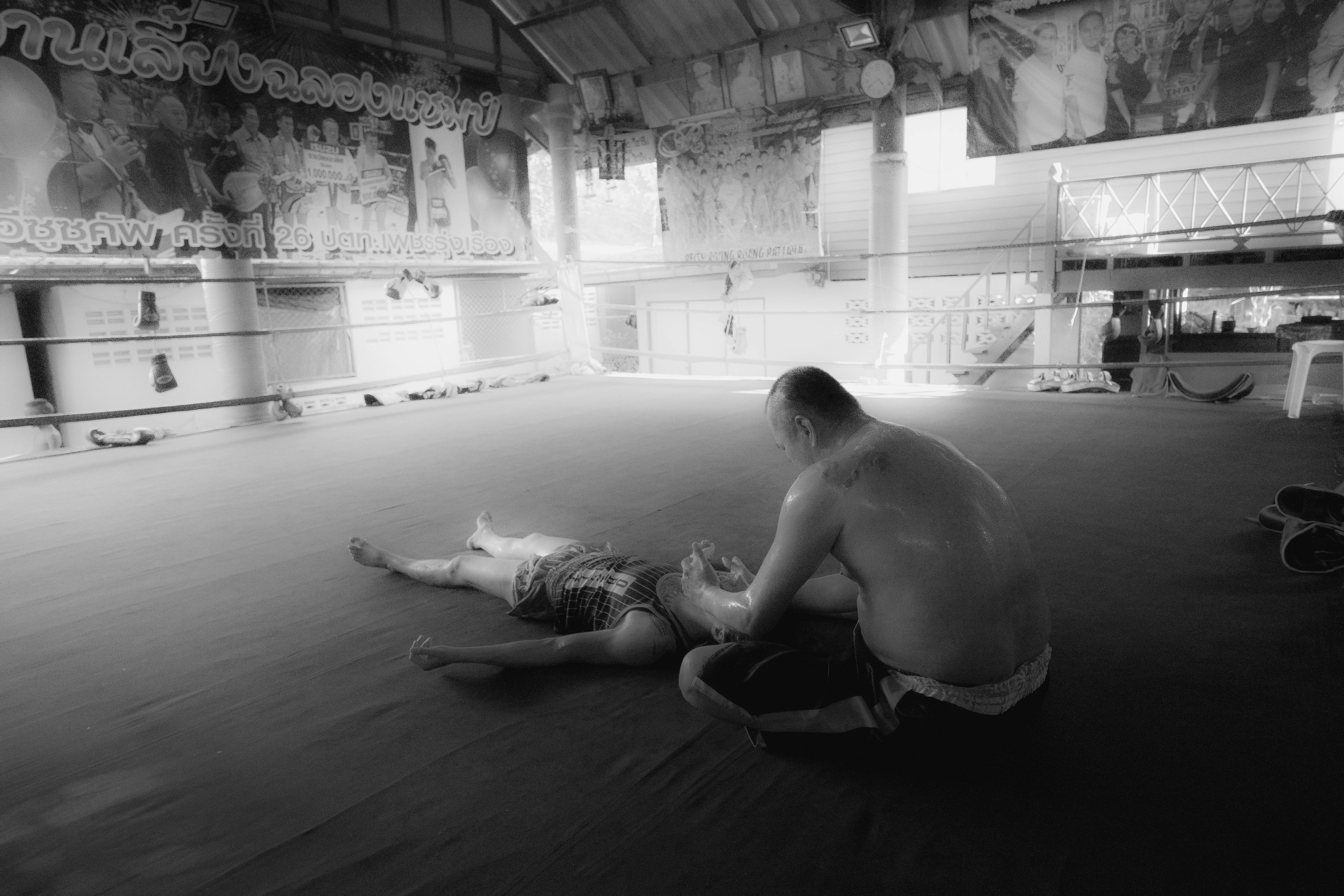
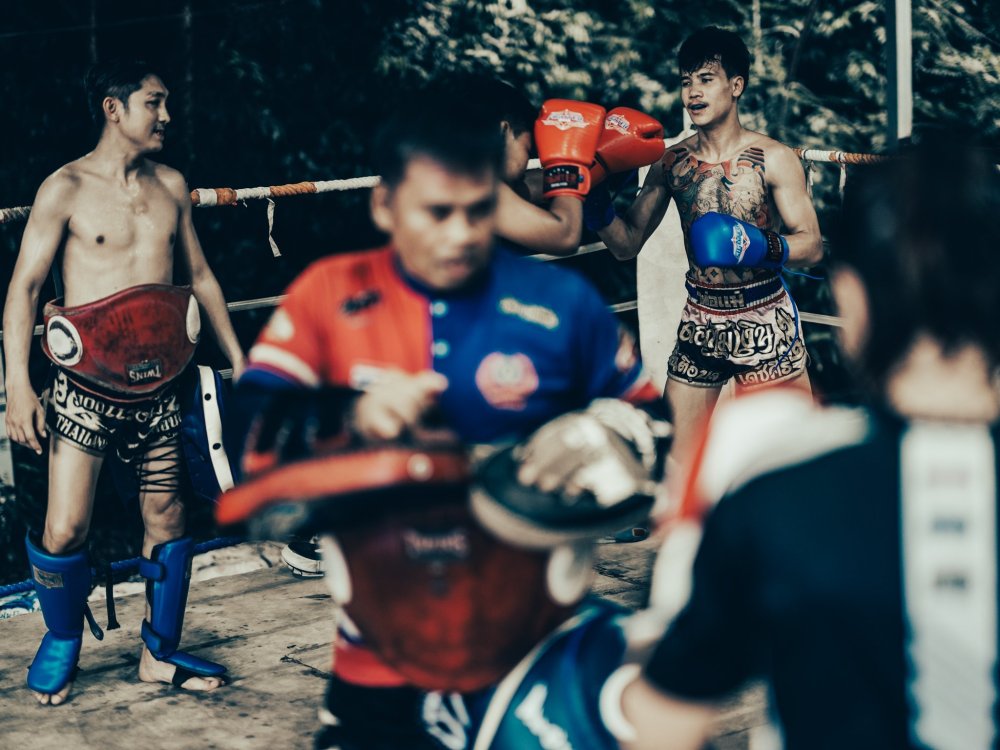
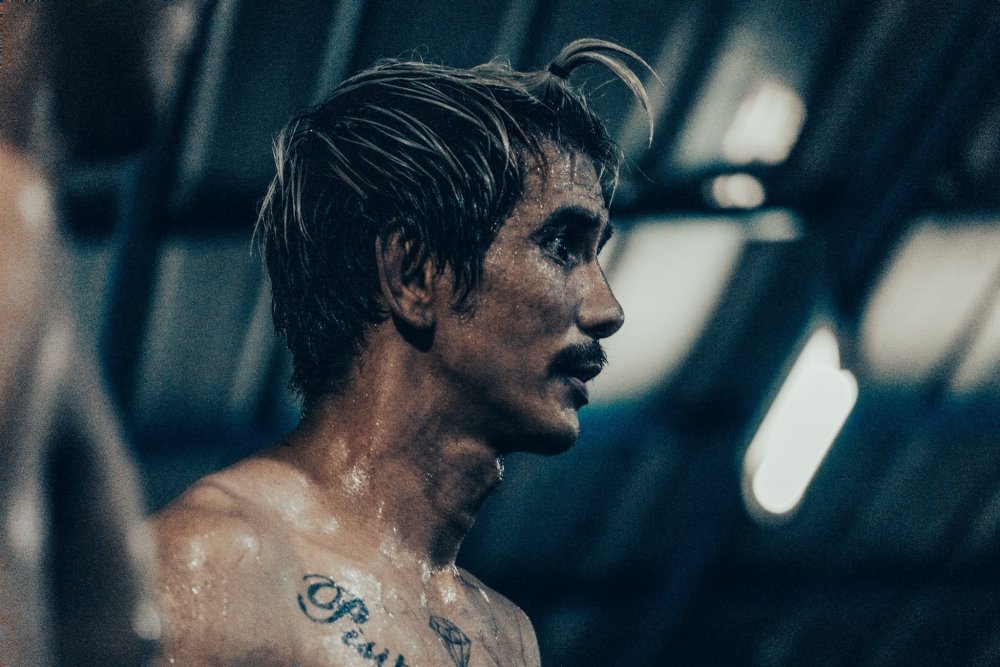
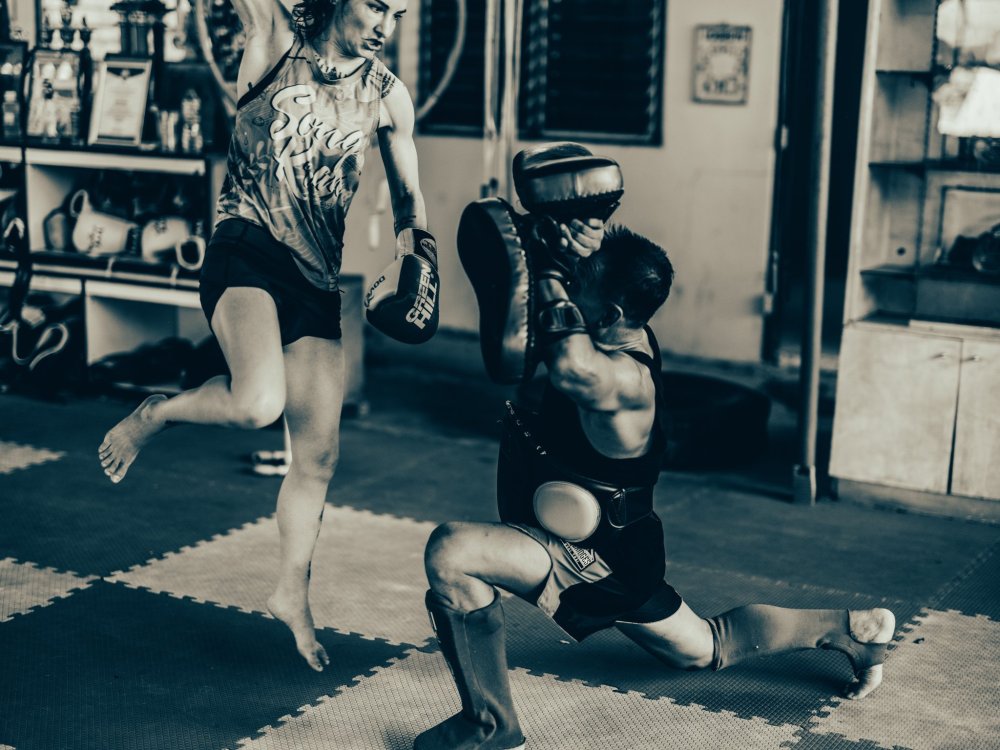
.thumb.jpg.f547092ad2ea8cf417d33821efb79968.jpg)
.thumb.jpg.bfa09466464afc200bb2aa47eadc4b33.jpg)
.thumb.jpg.3113da7ebec966aa307e63ce5536e731.jpg)
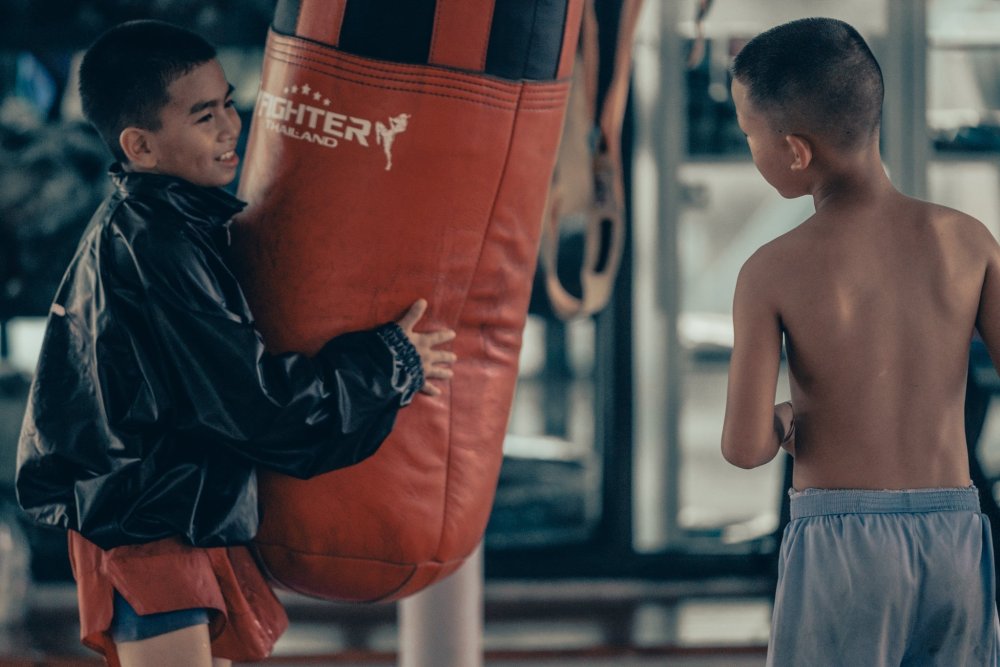
.thumb.jpg.03972c27f95a469de3e87de3b8764bde.jpg)
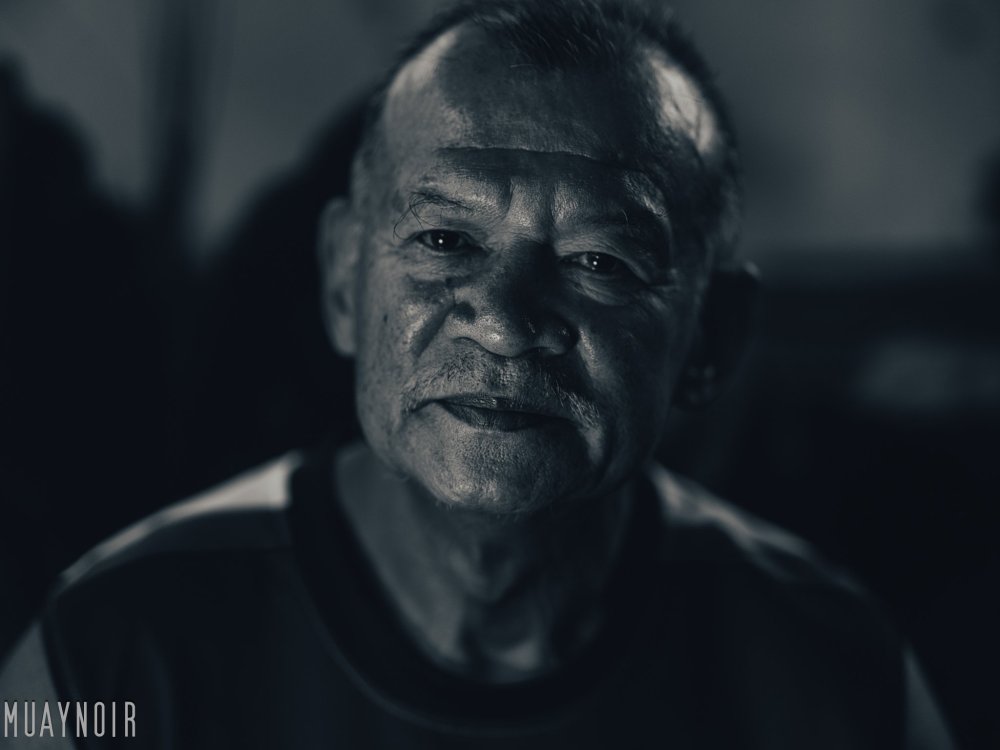
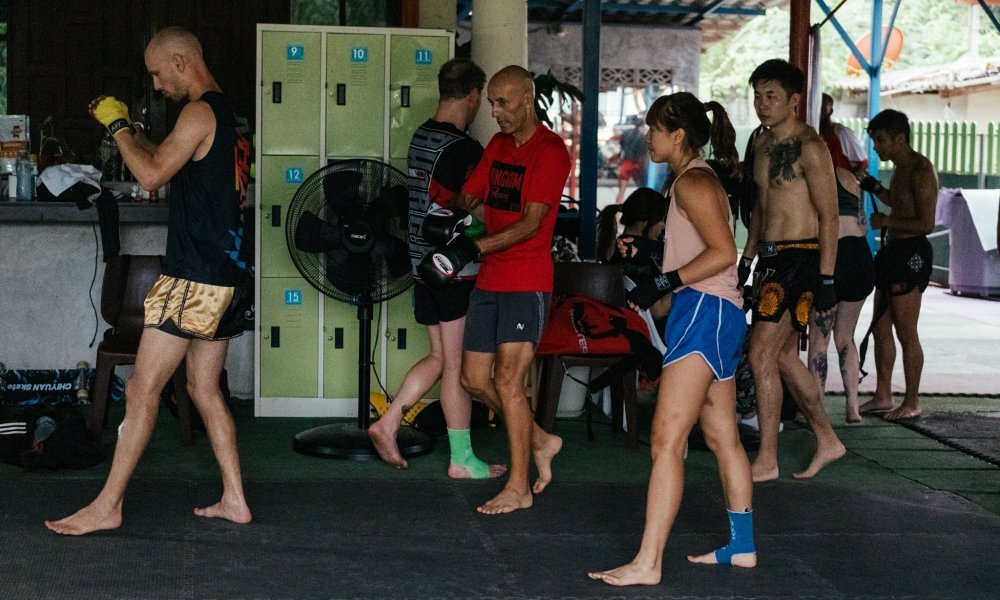
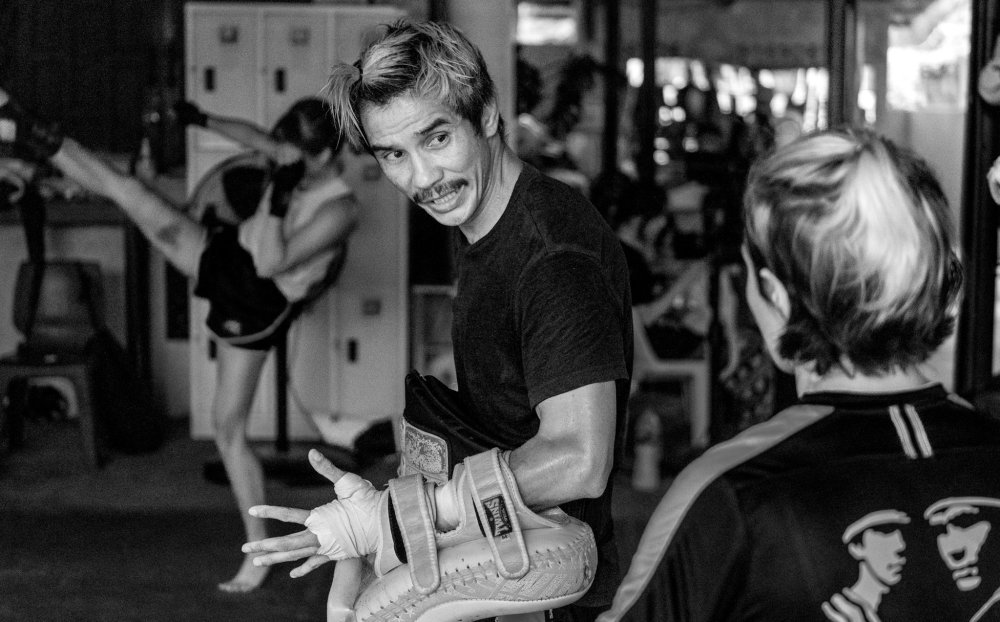
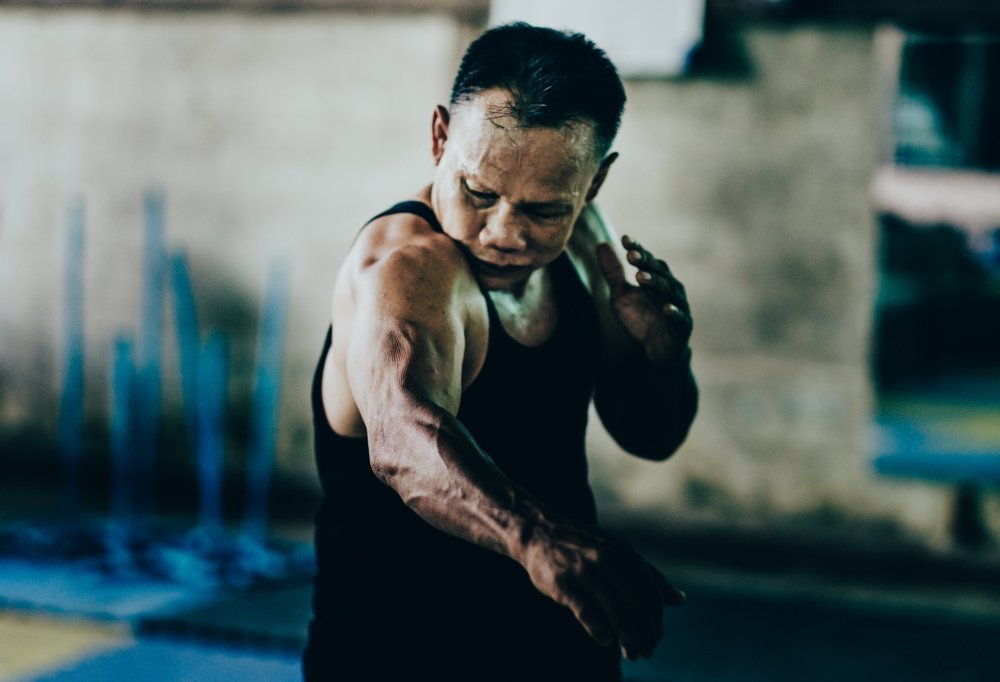
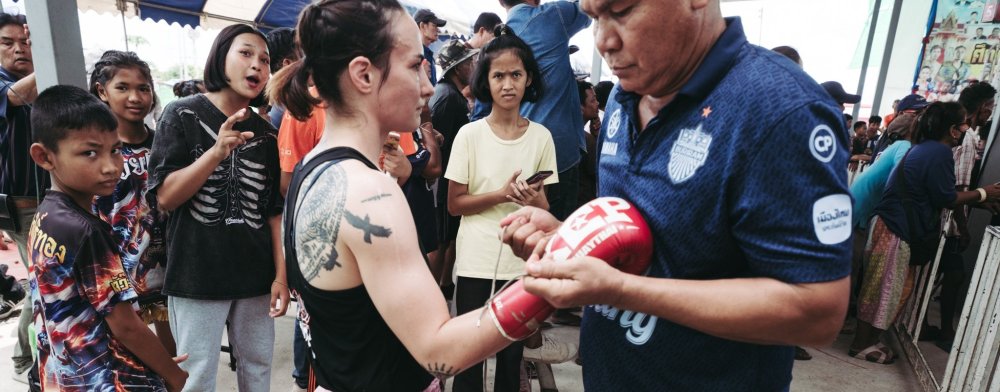
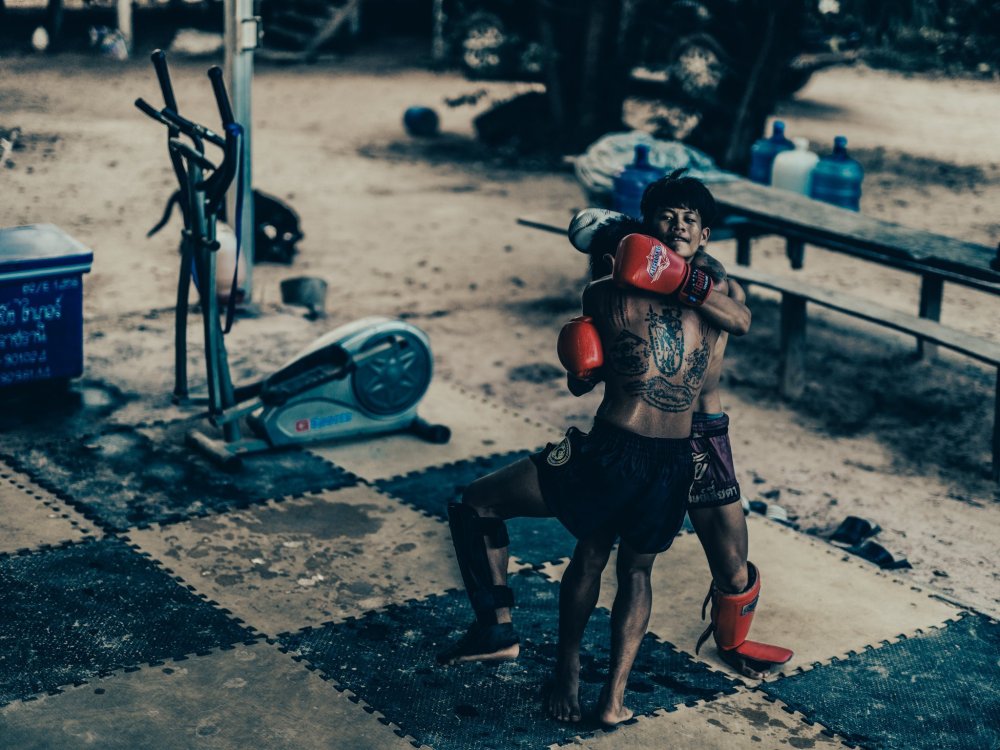
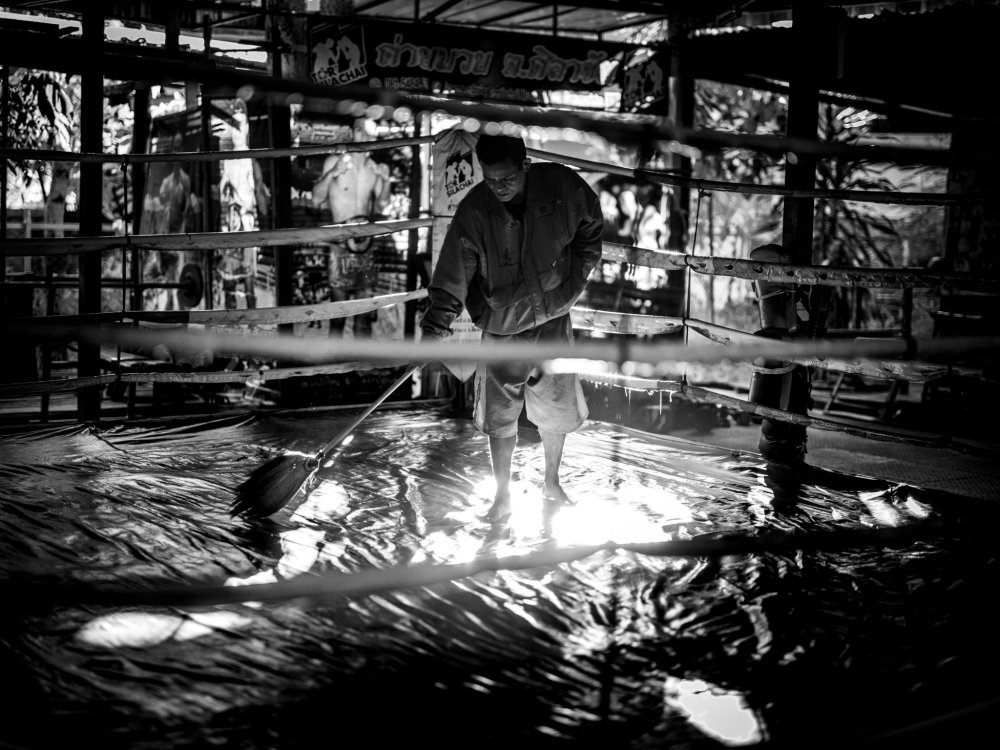
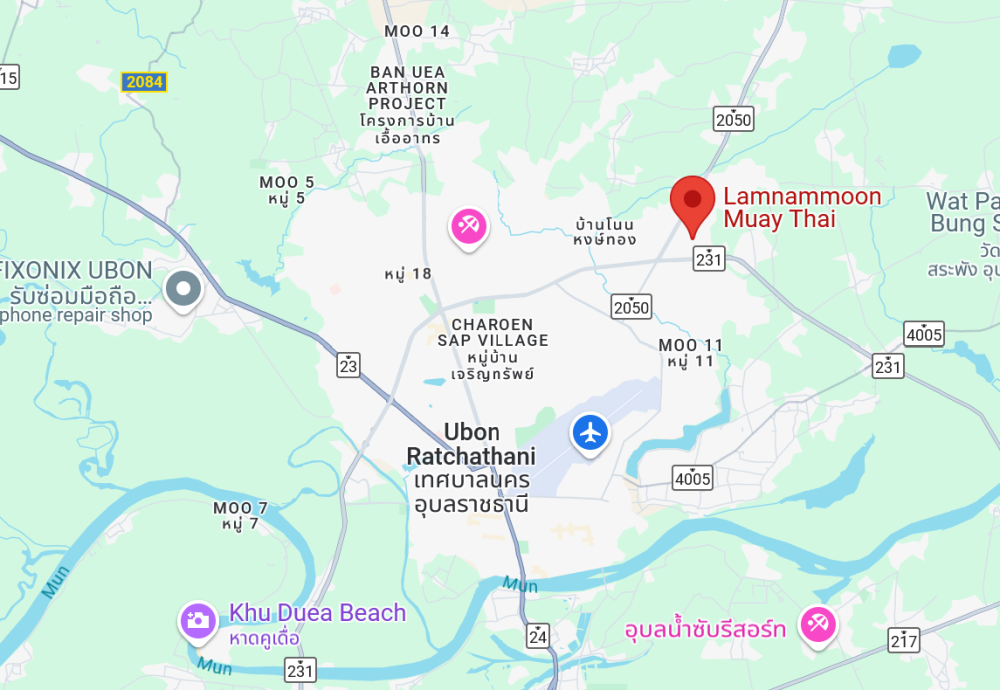
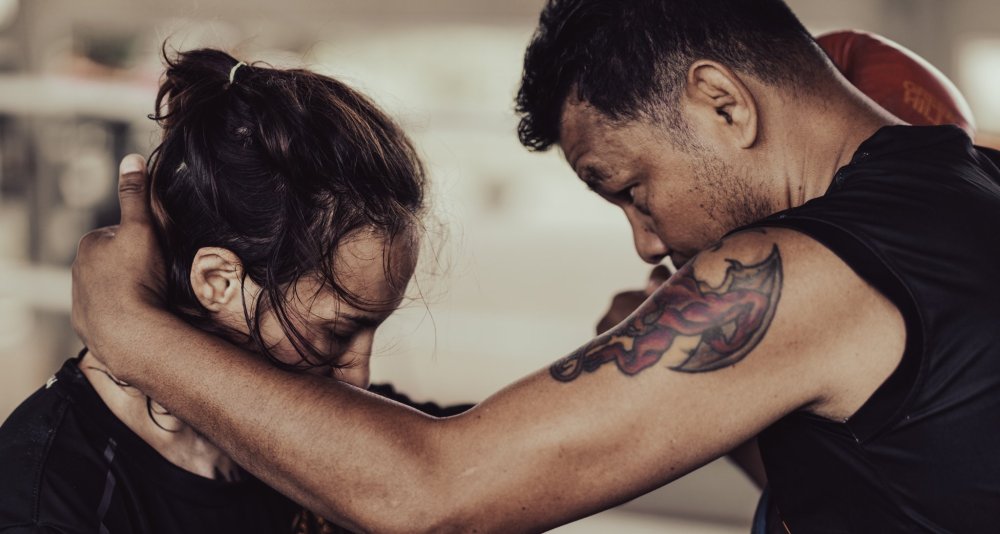
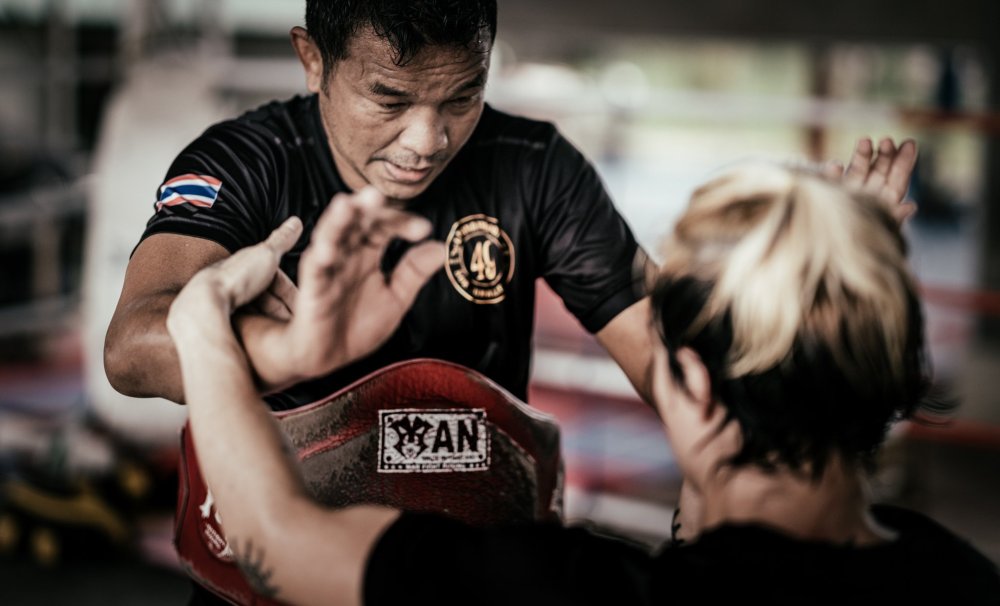
.thumb.jpg.e6c15b546b640de733b3556d59acc31e.jpg)
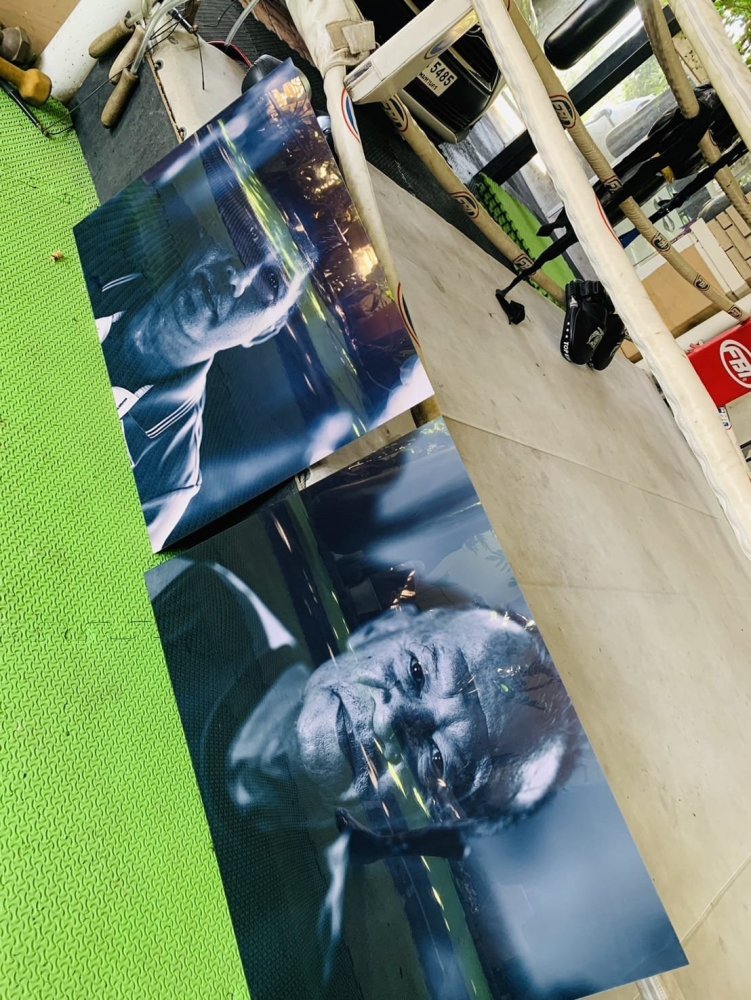
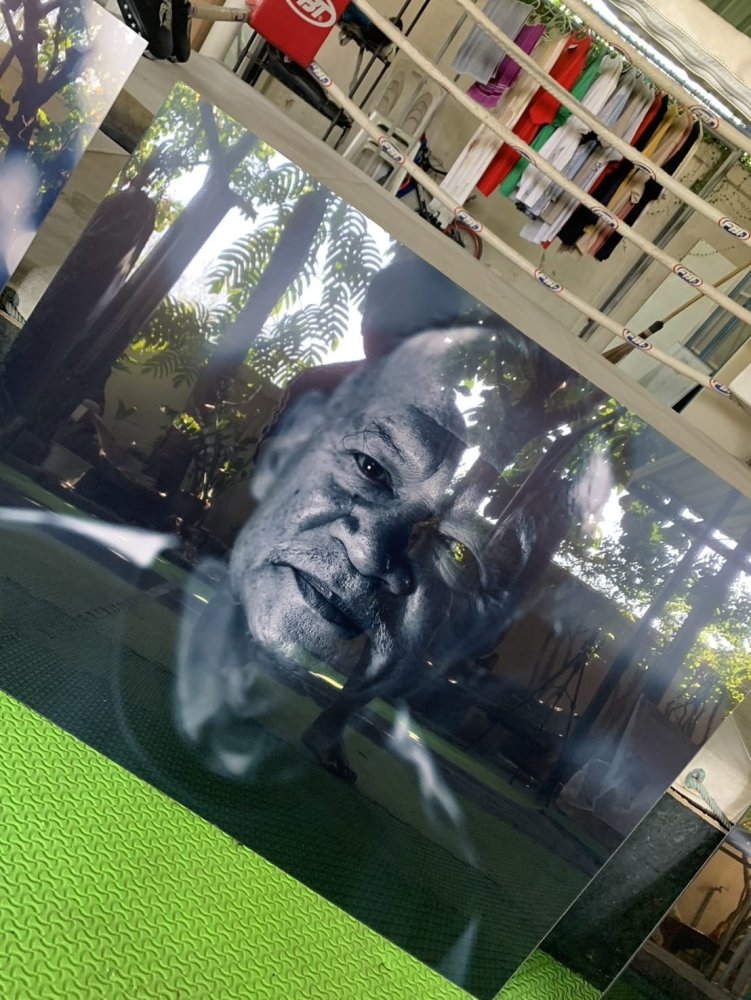
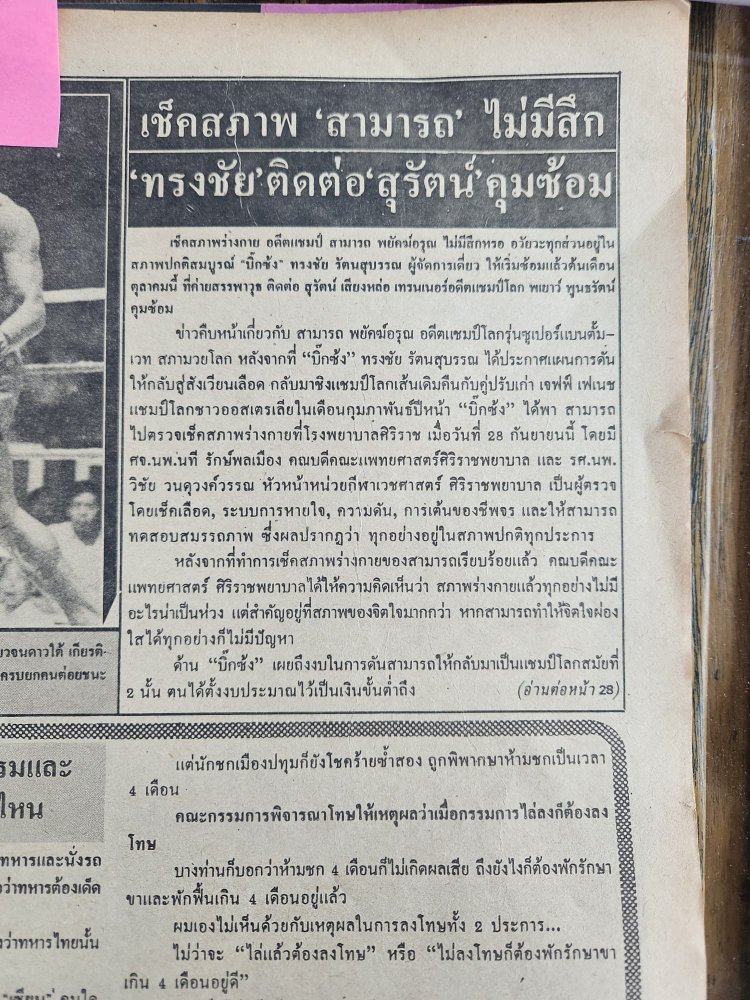
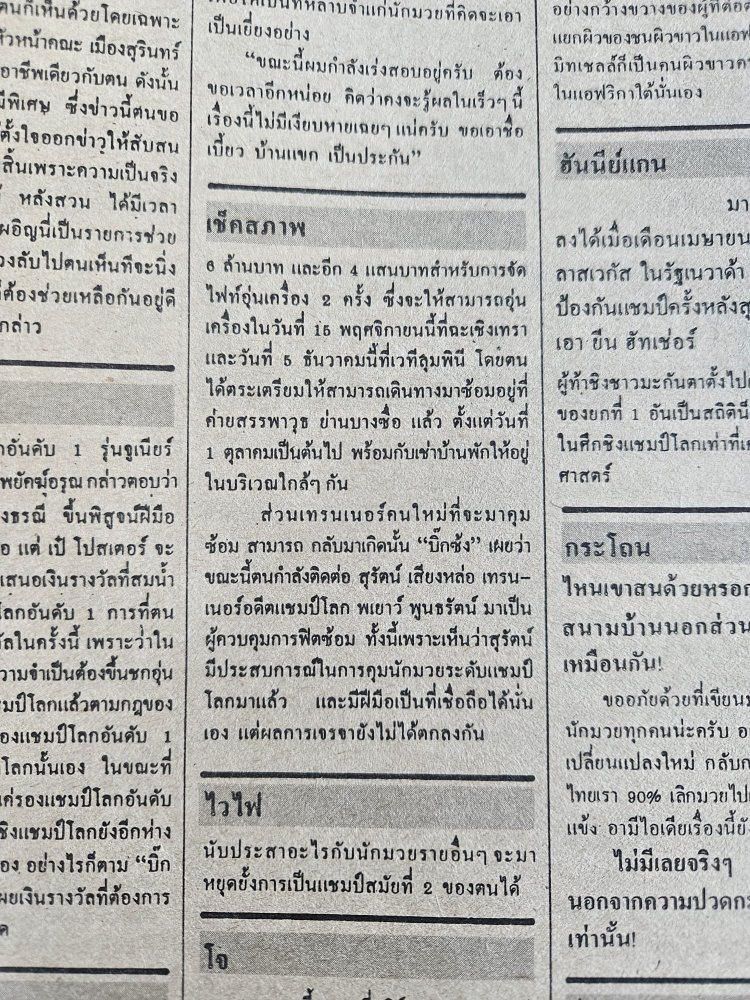
.thumb.jpg.4d388c964cdf4ee7de8307a4fbc89f3e.jpg)
